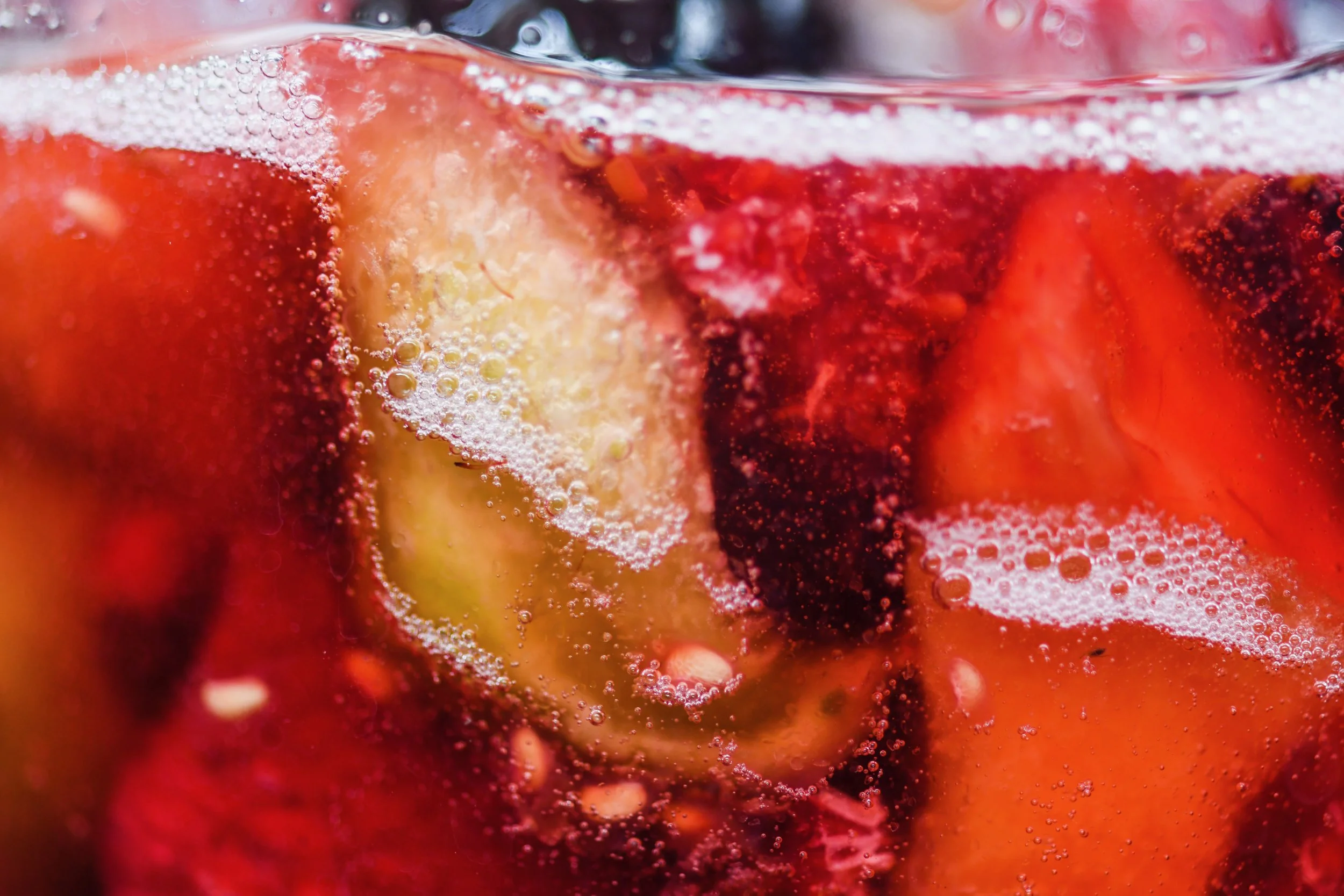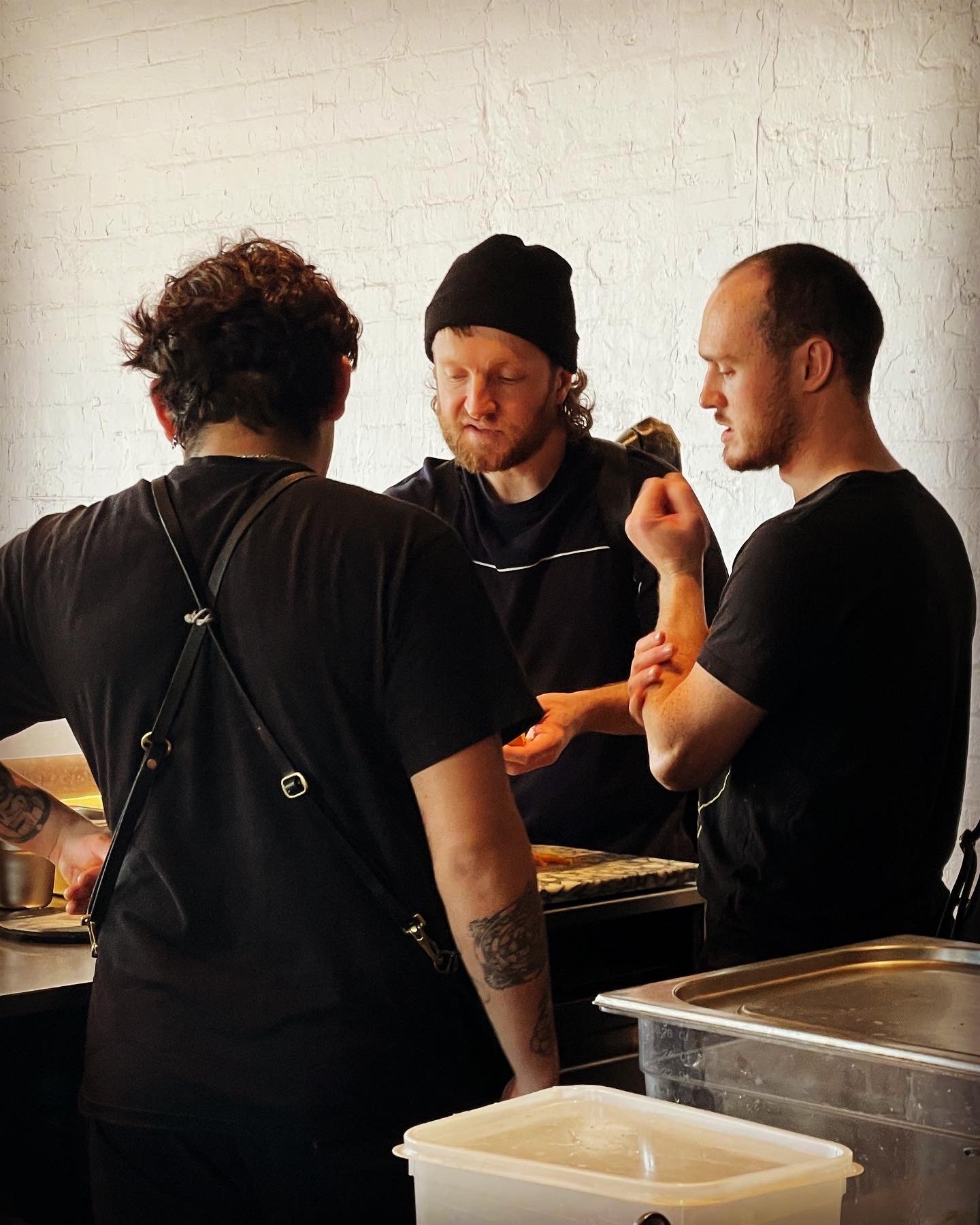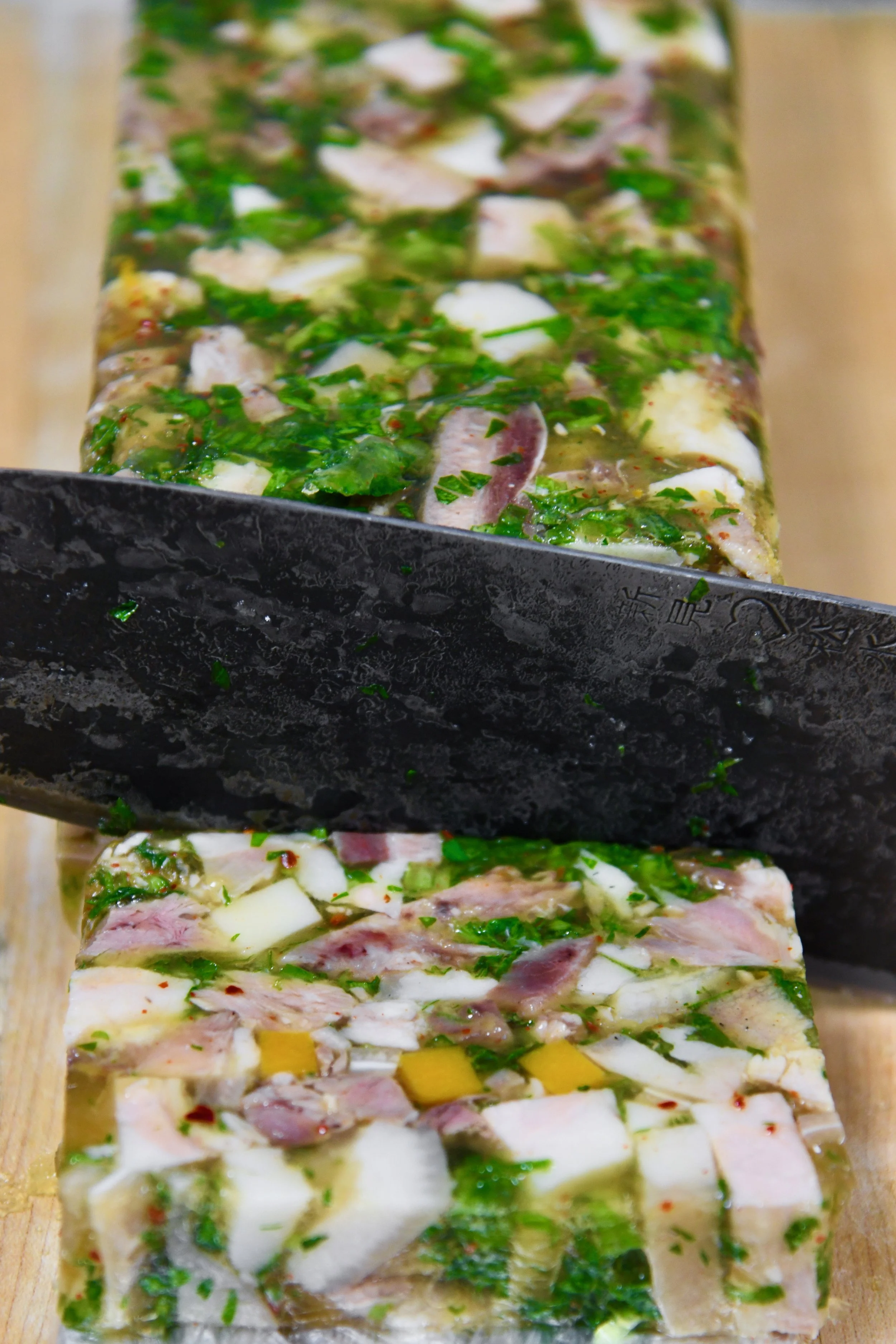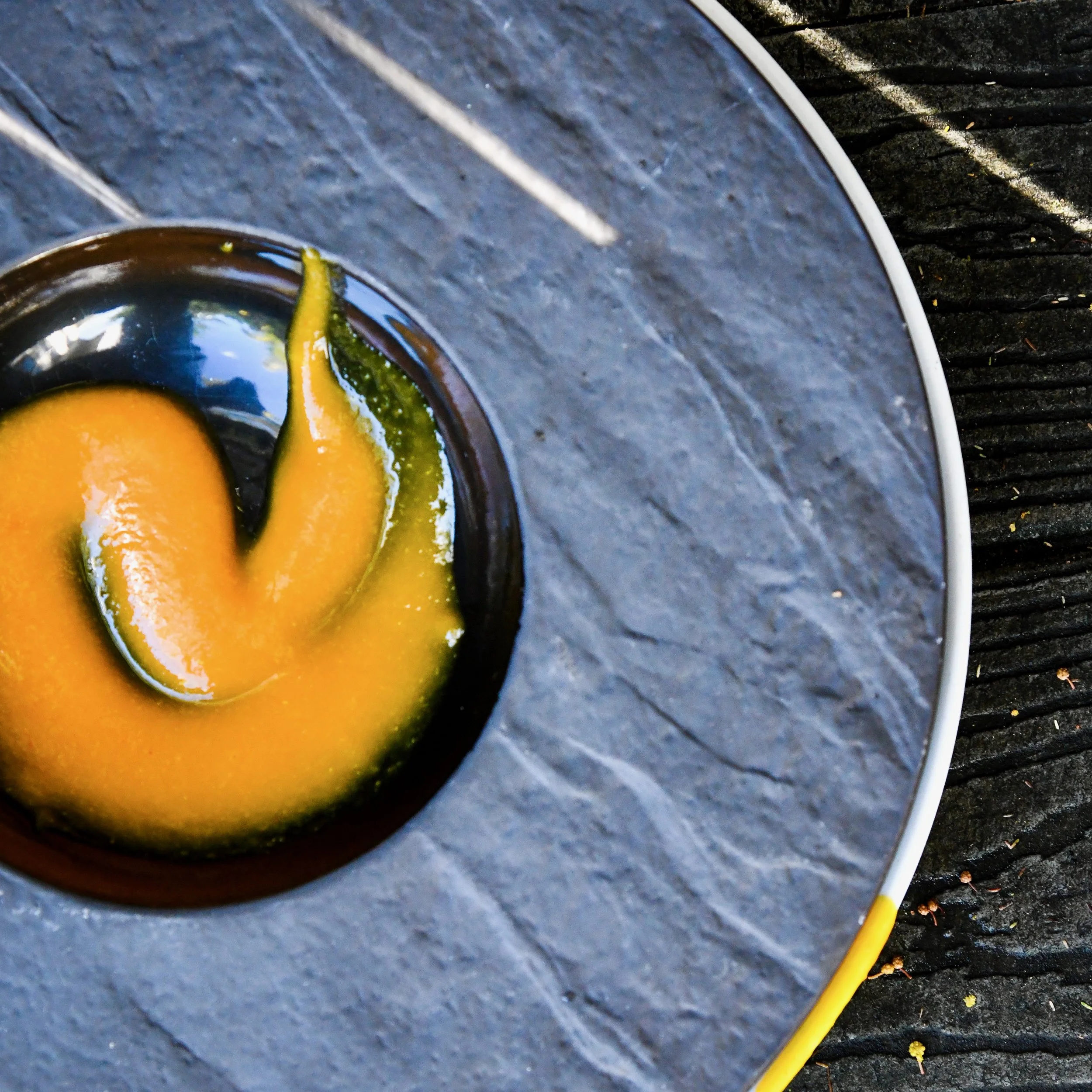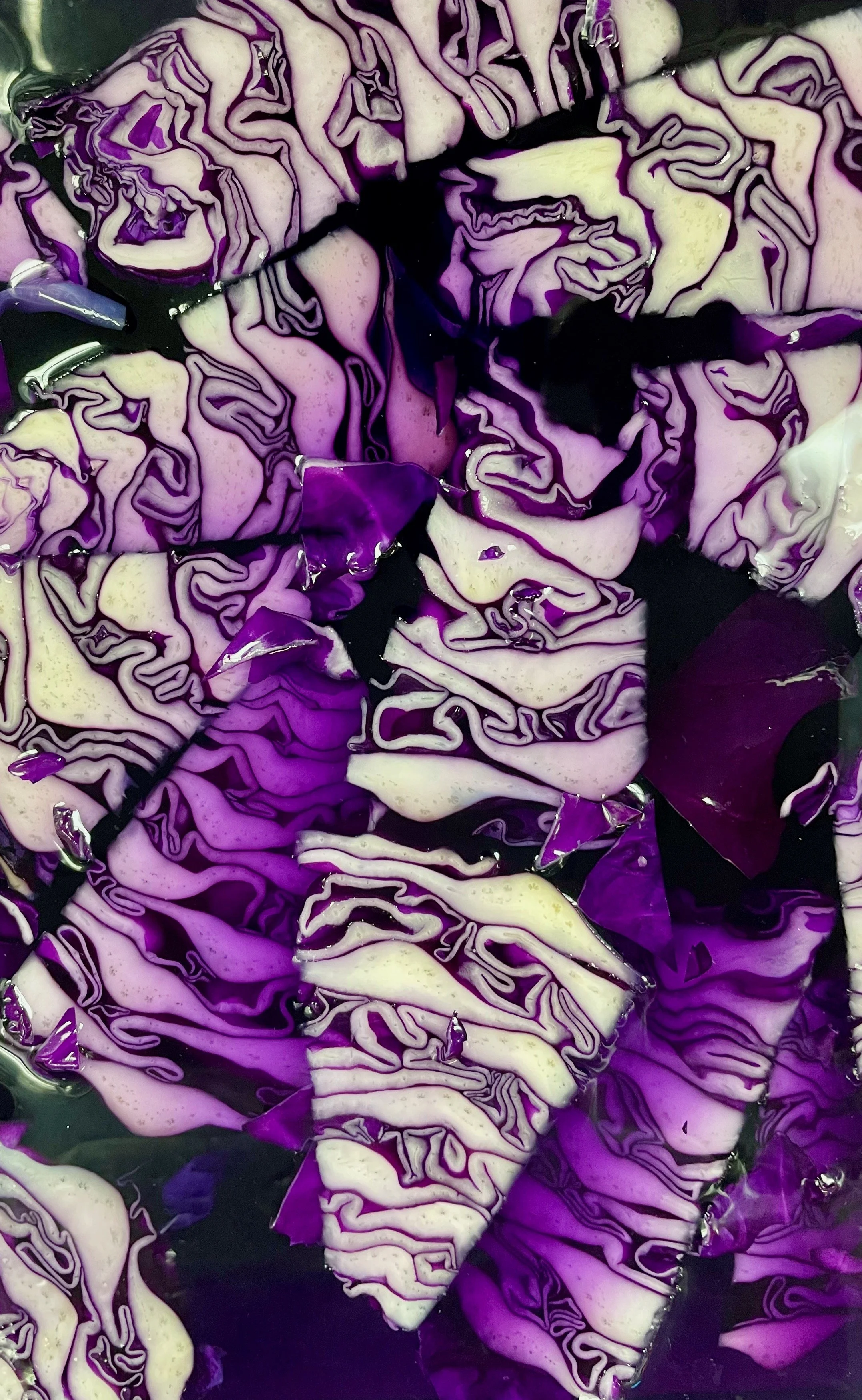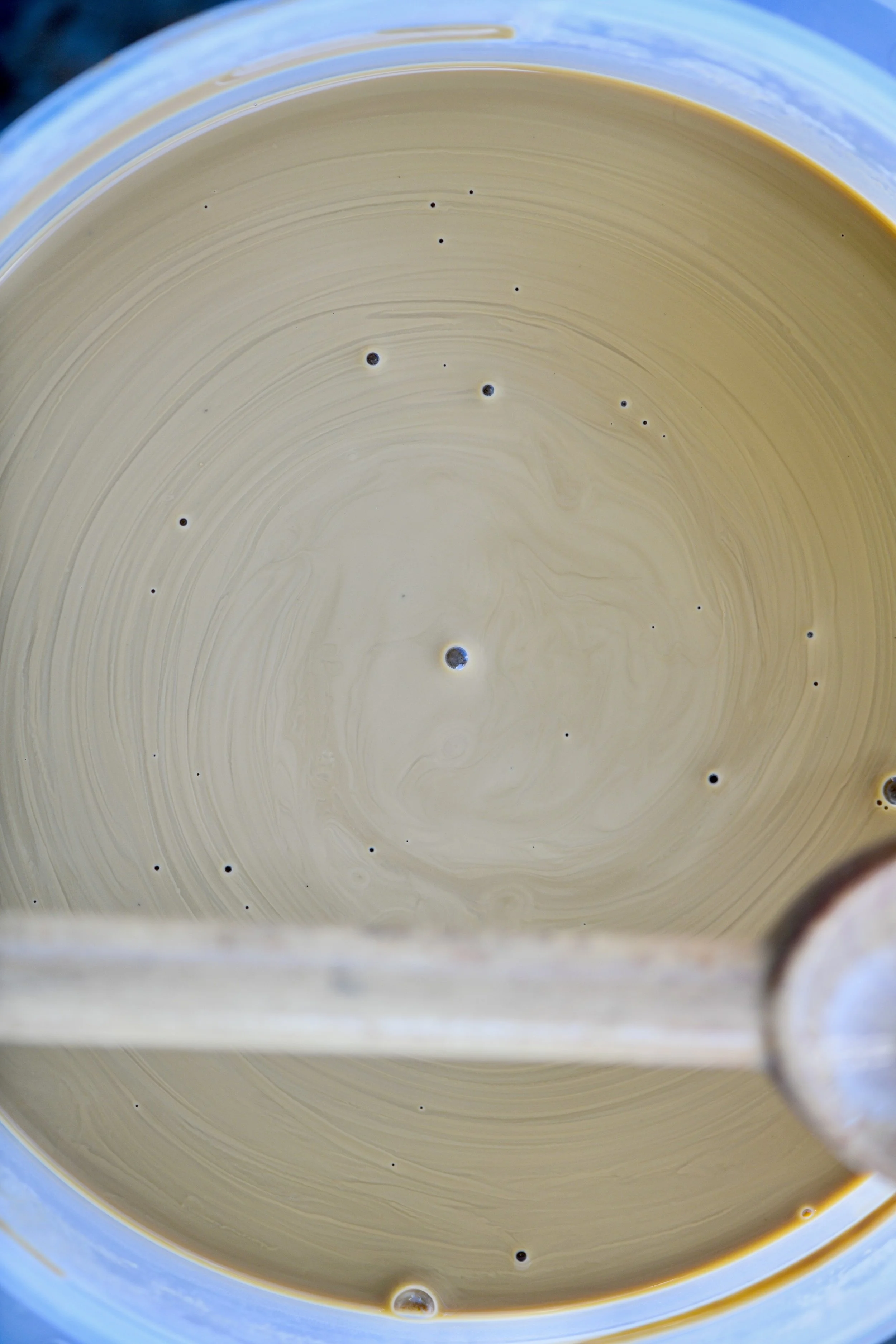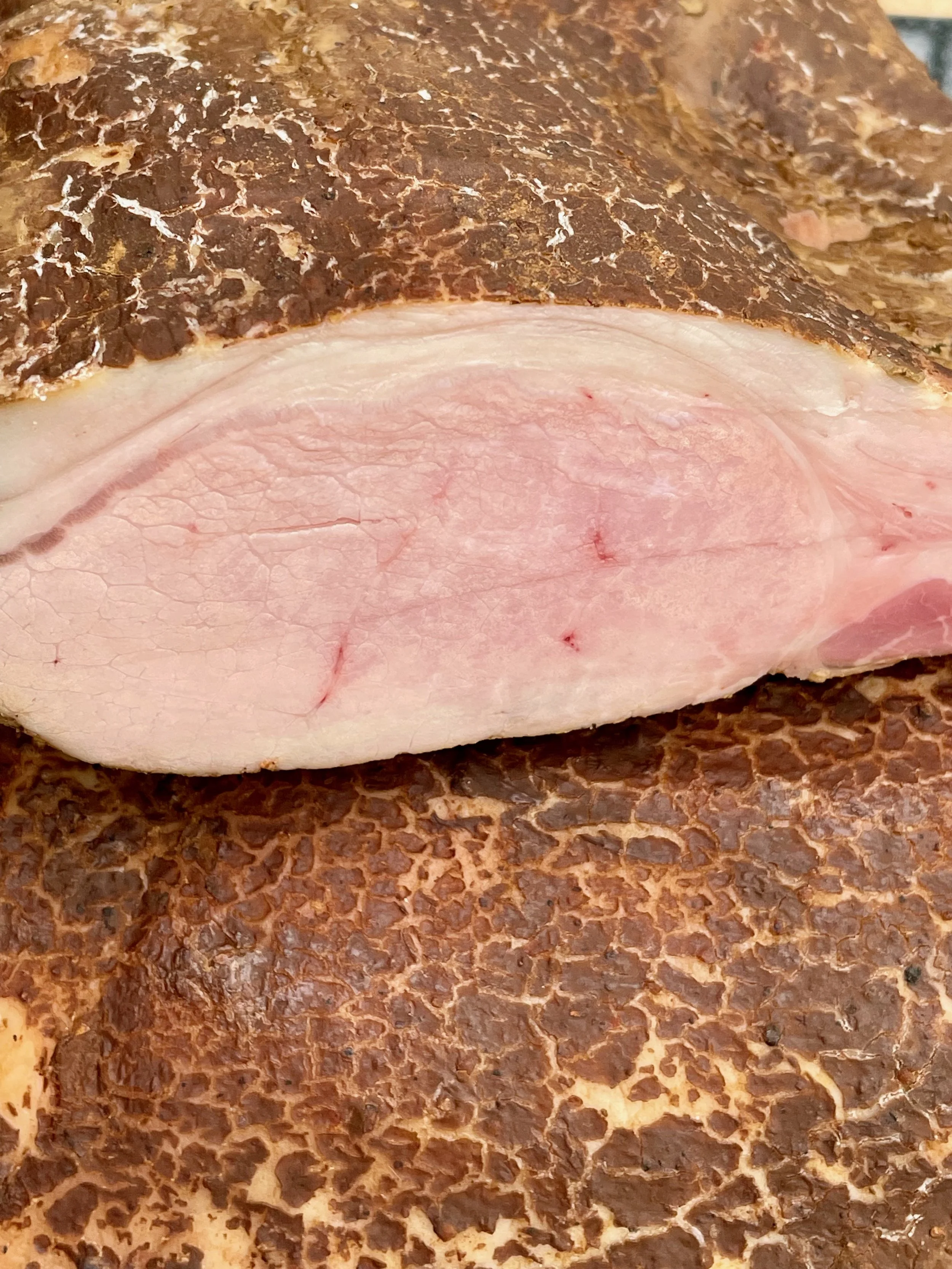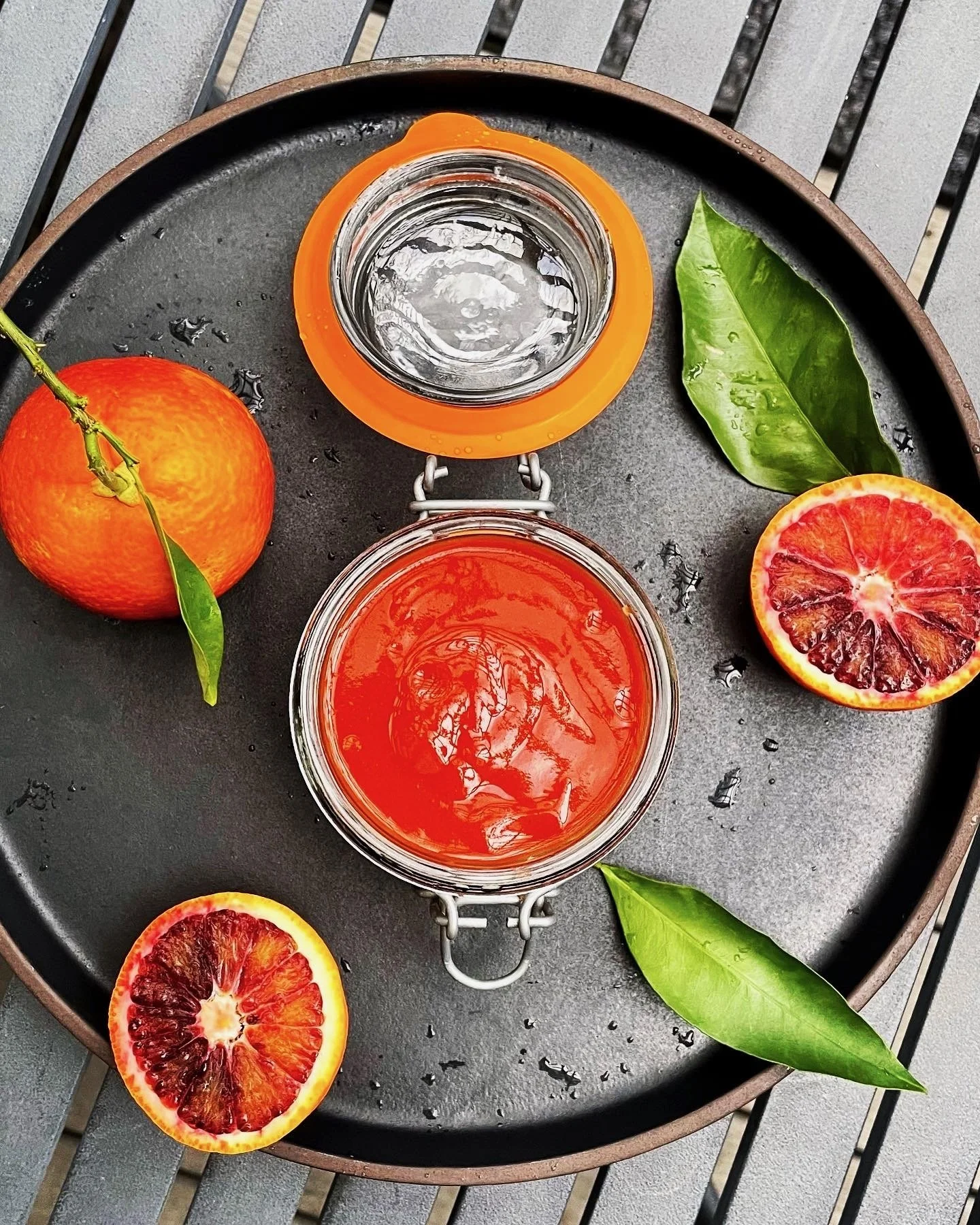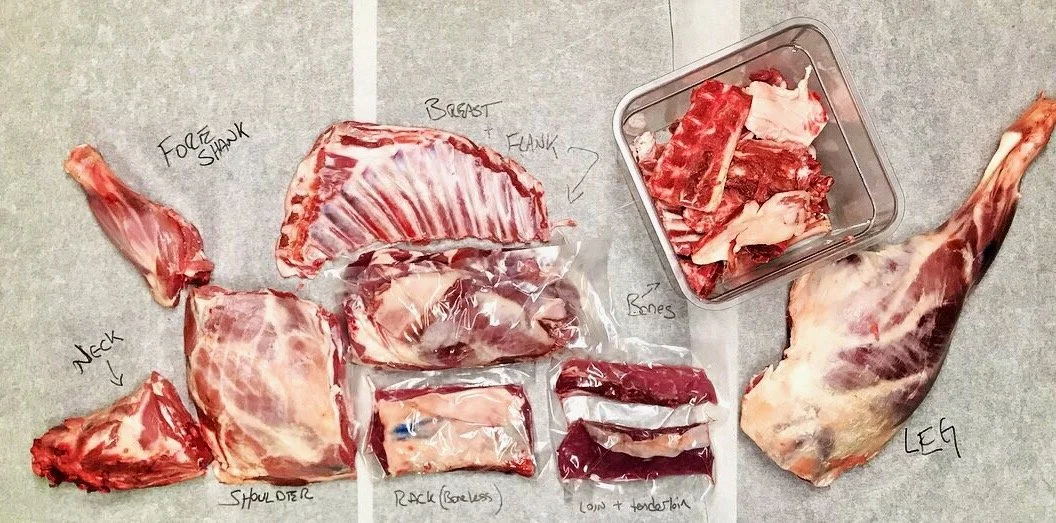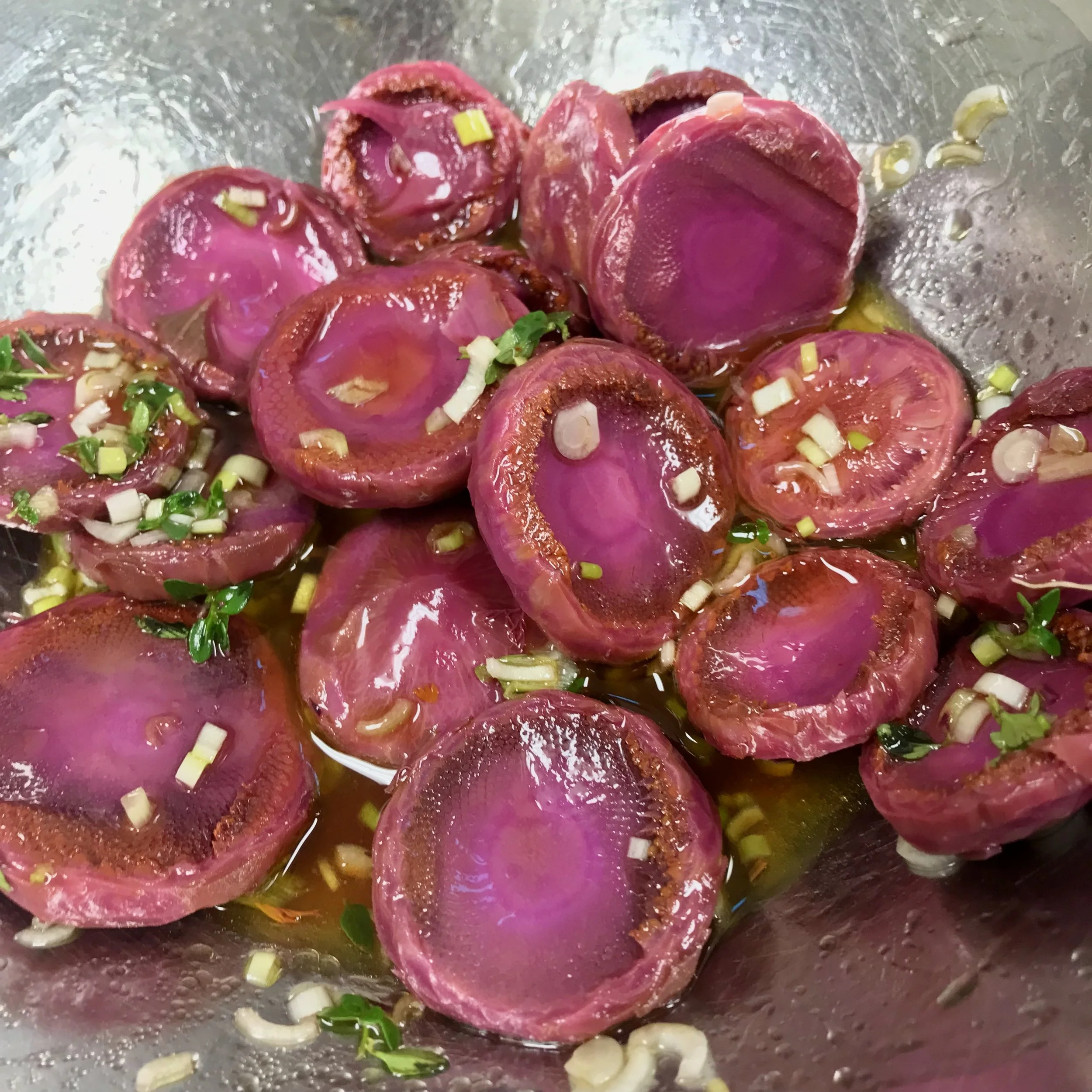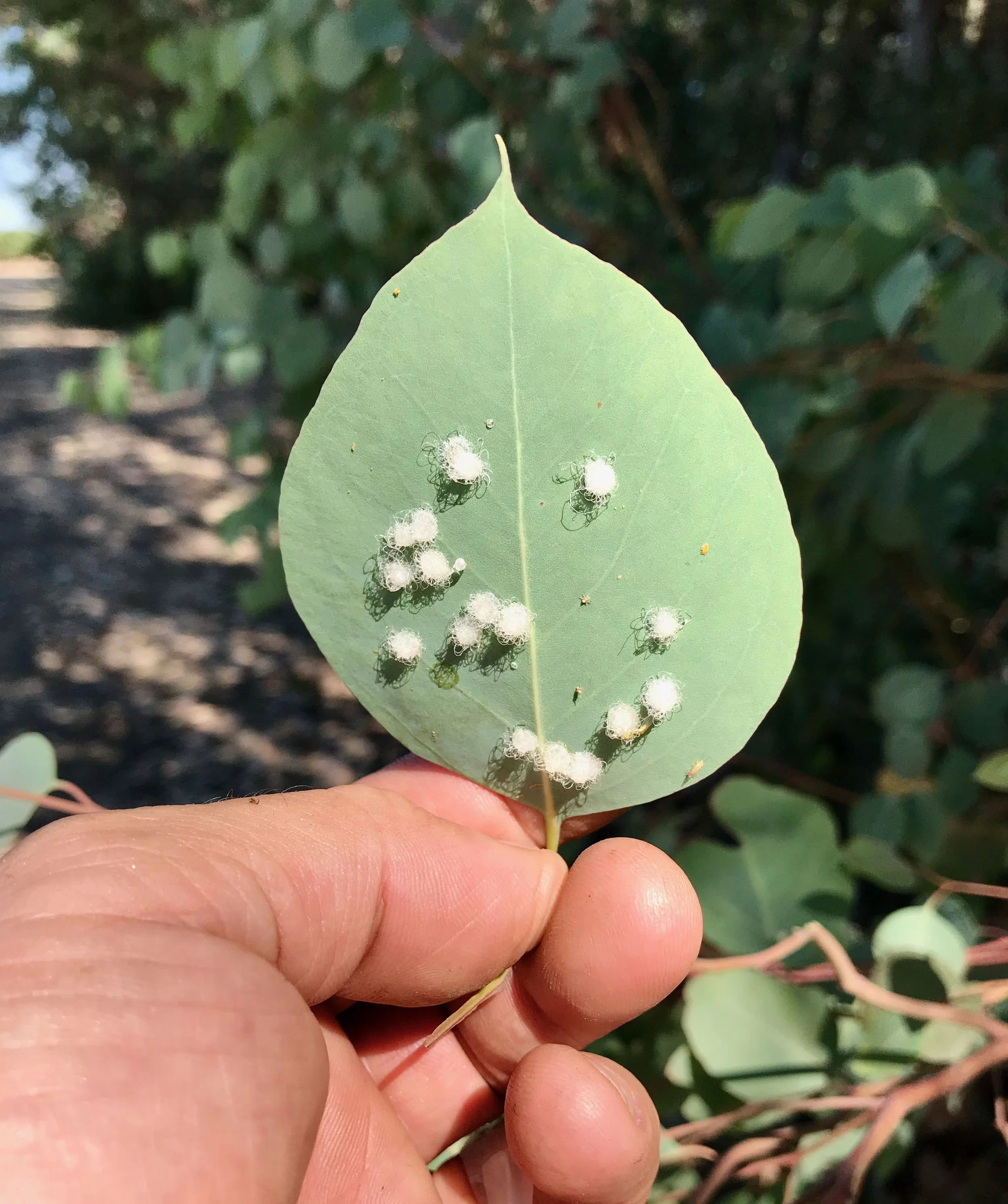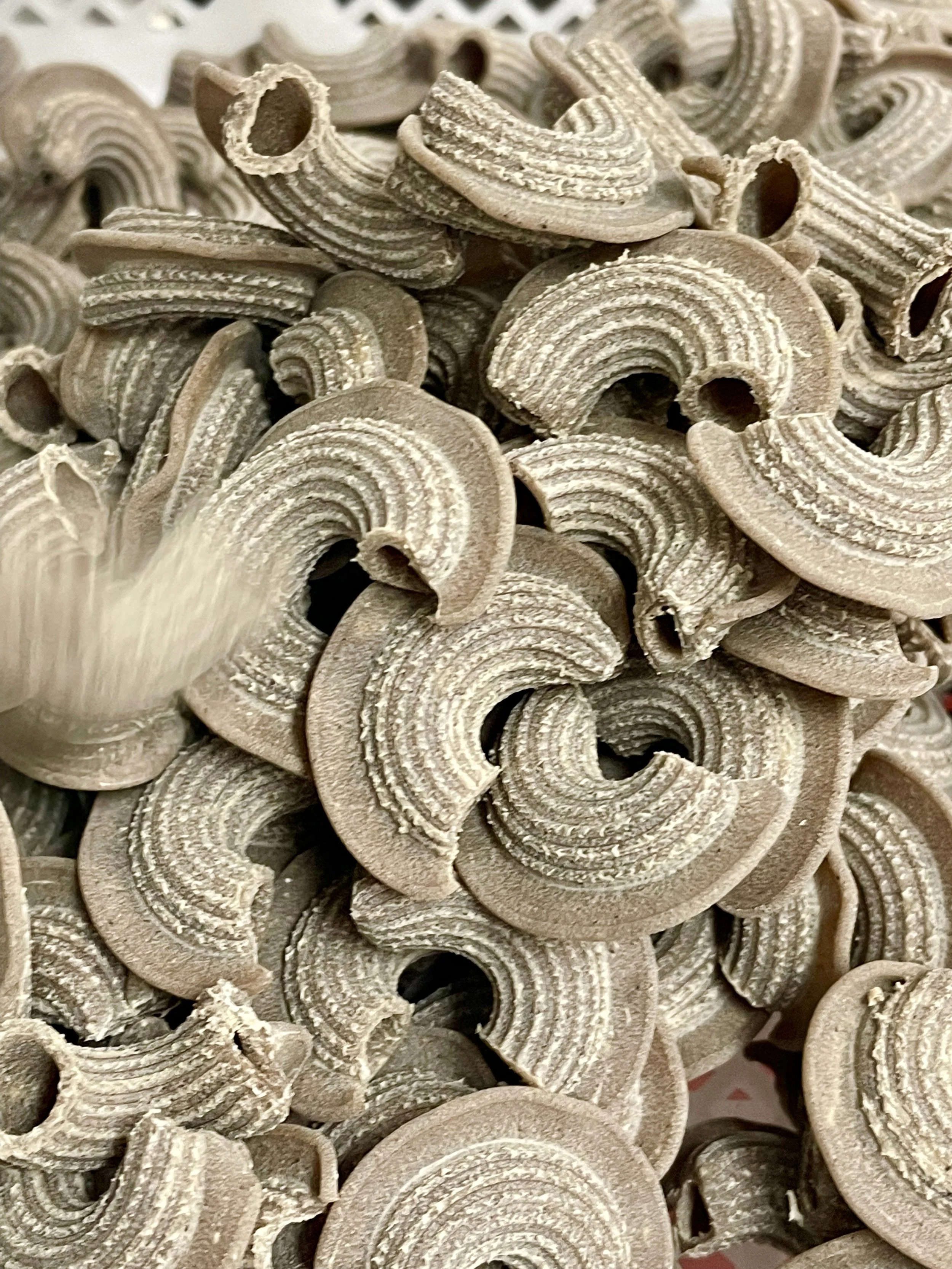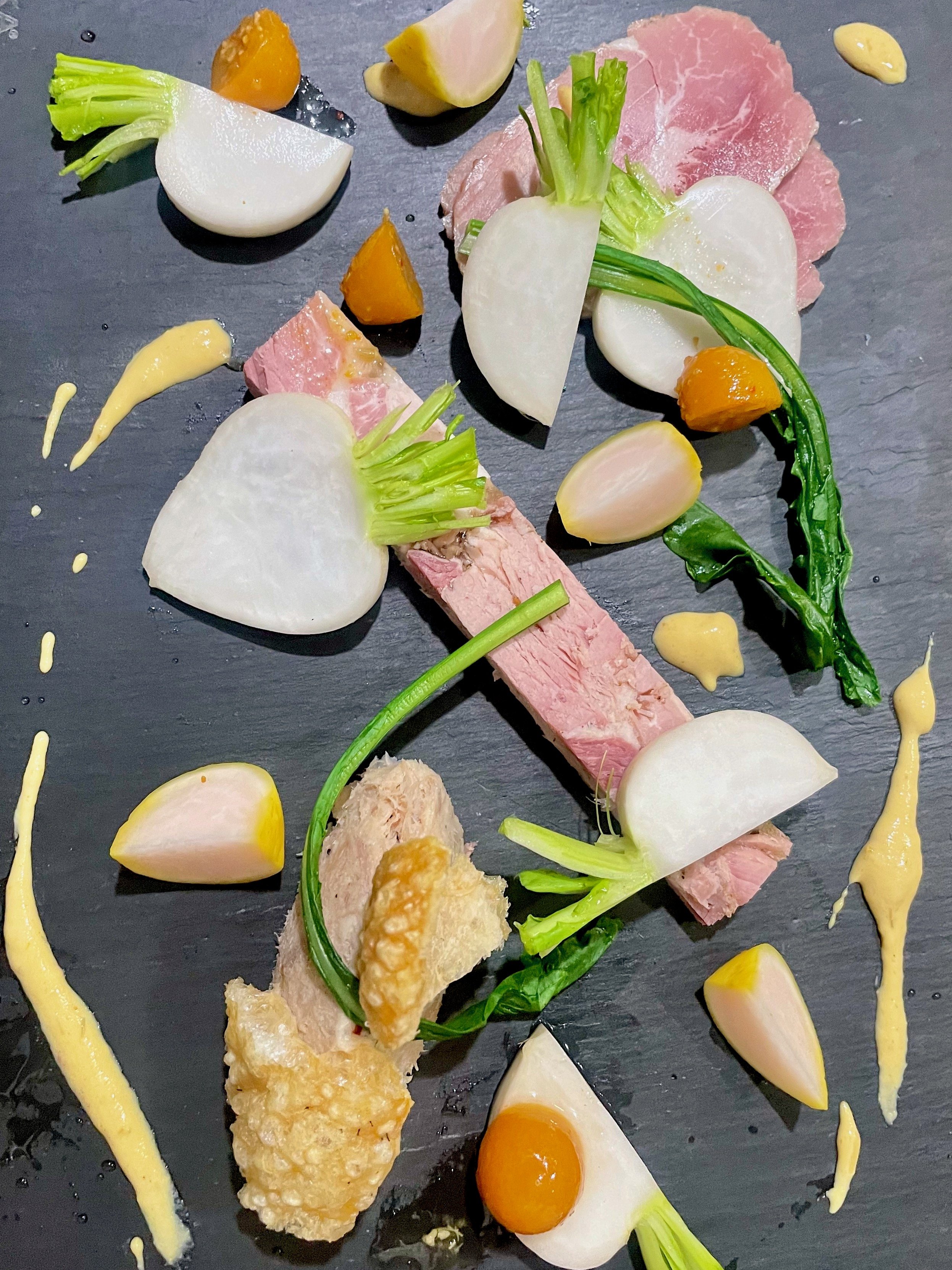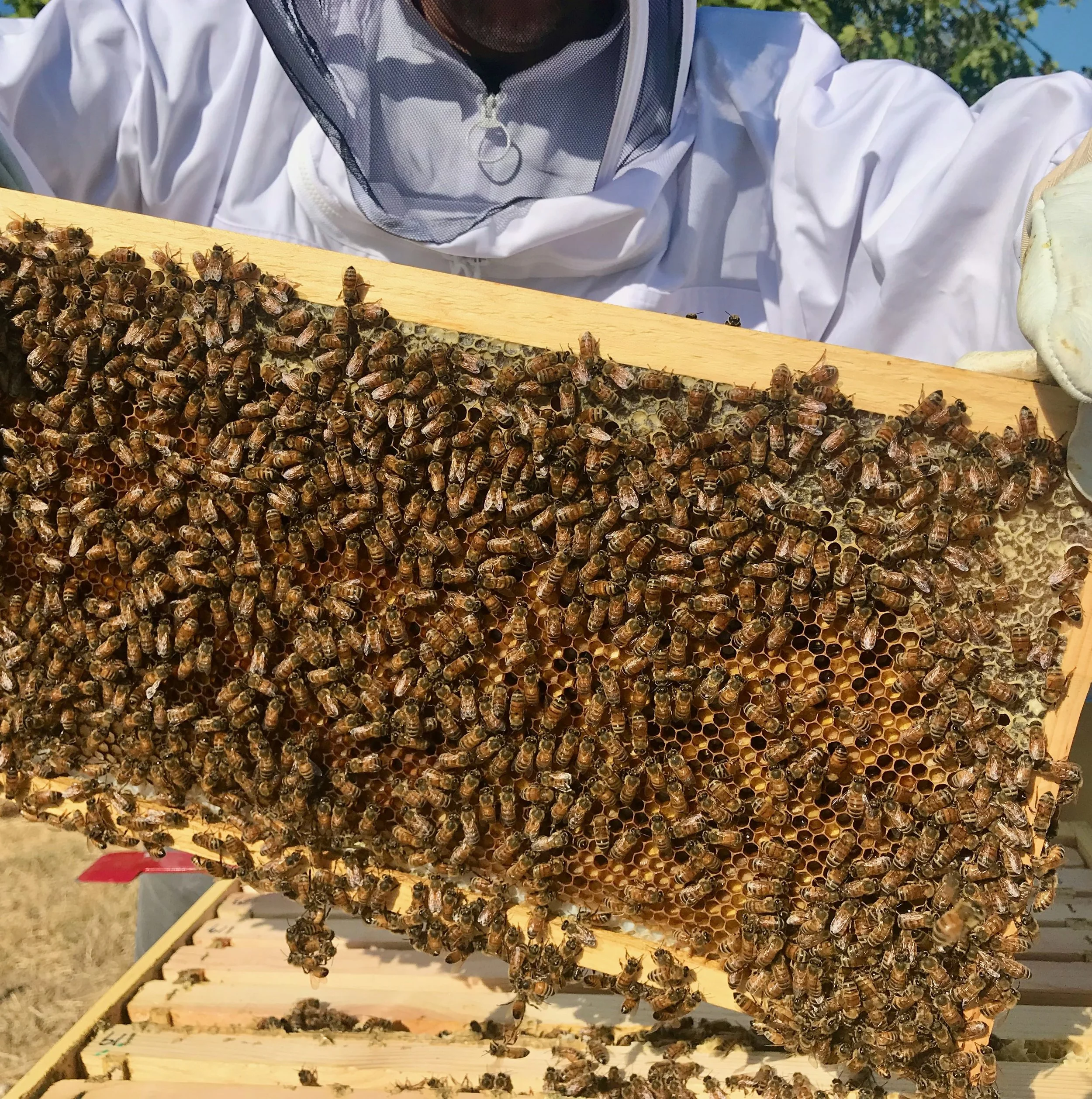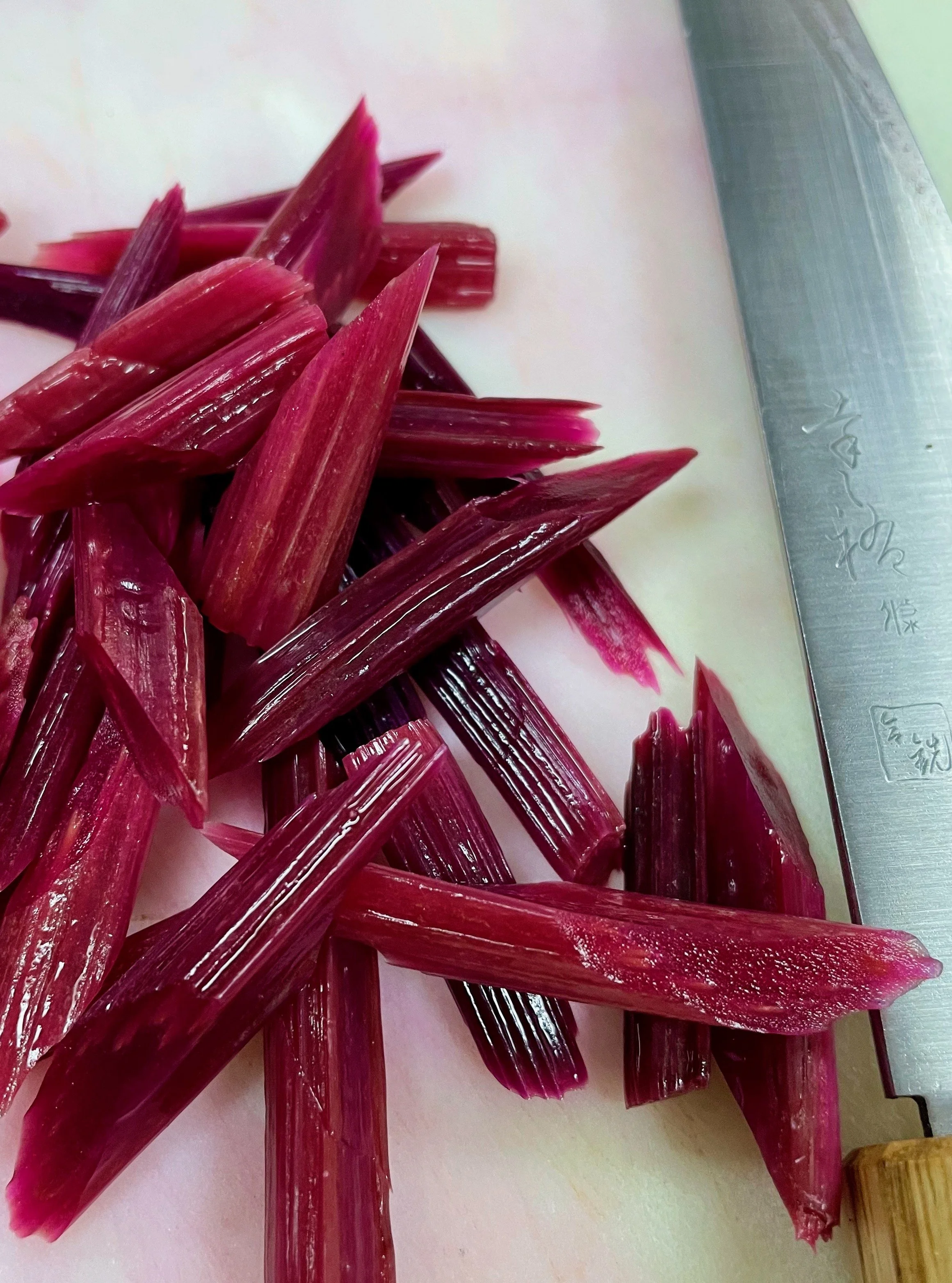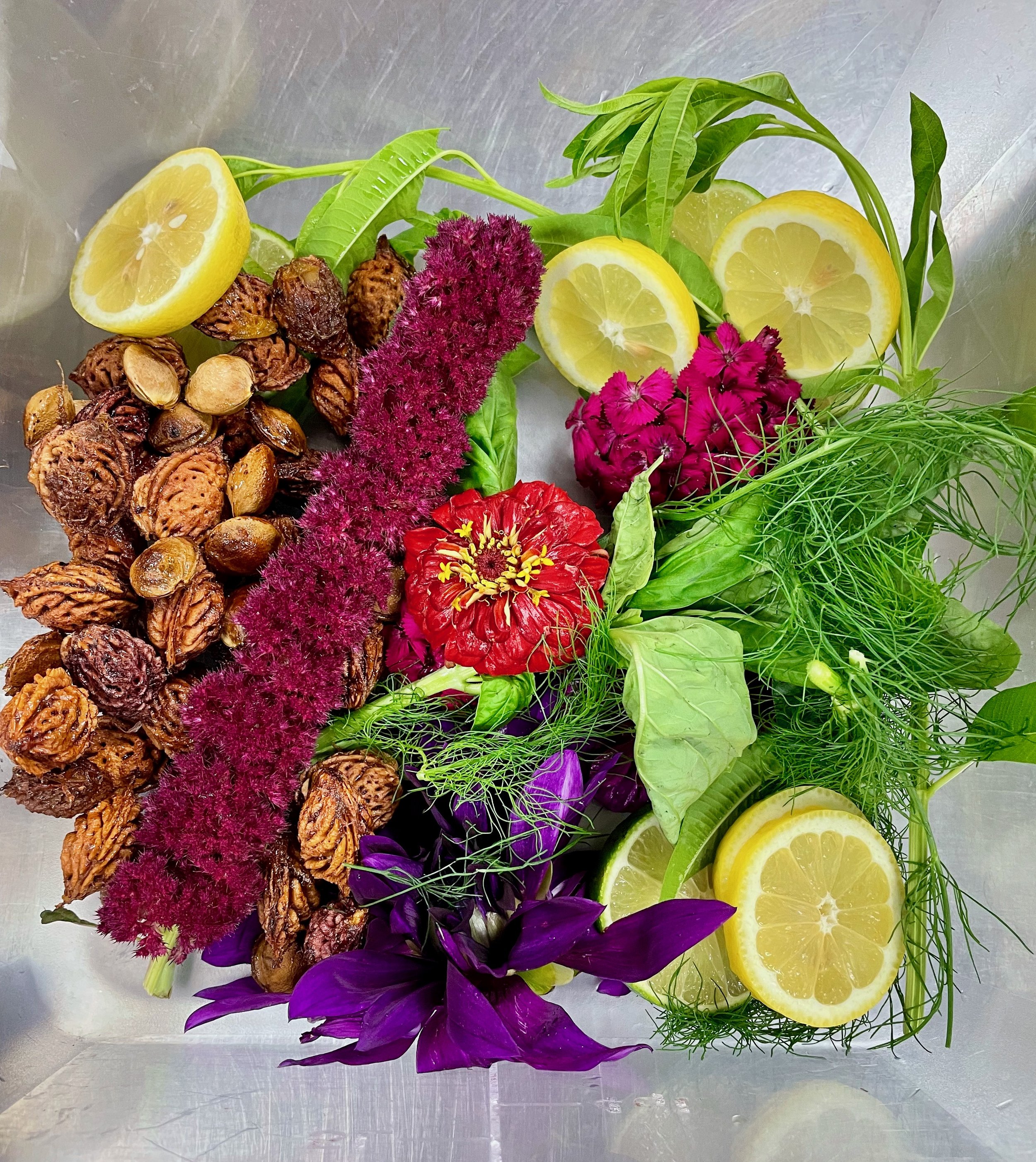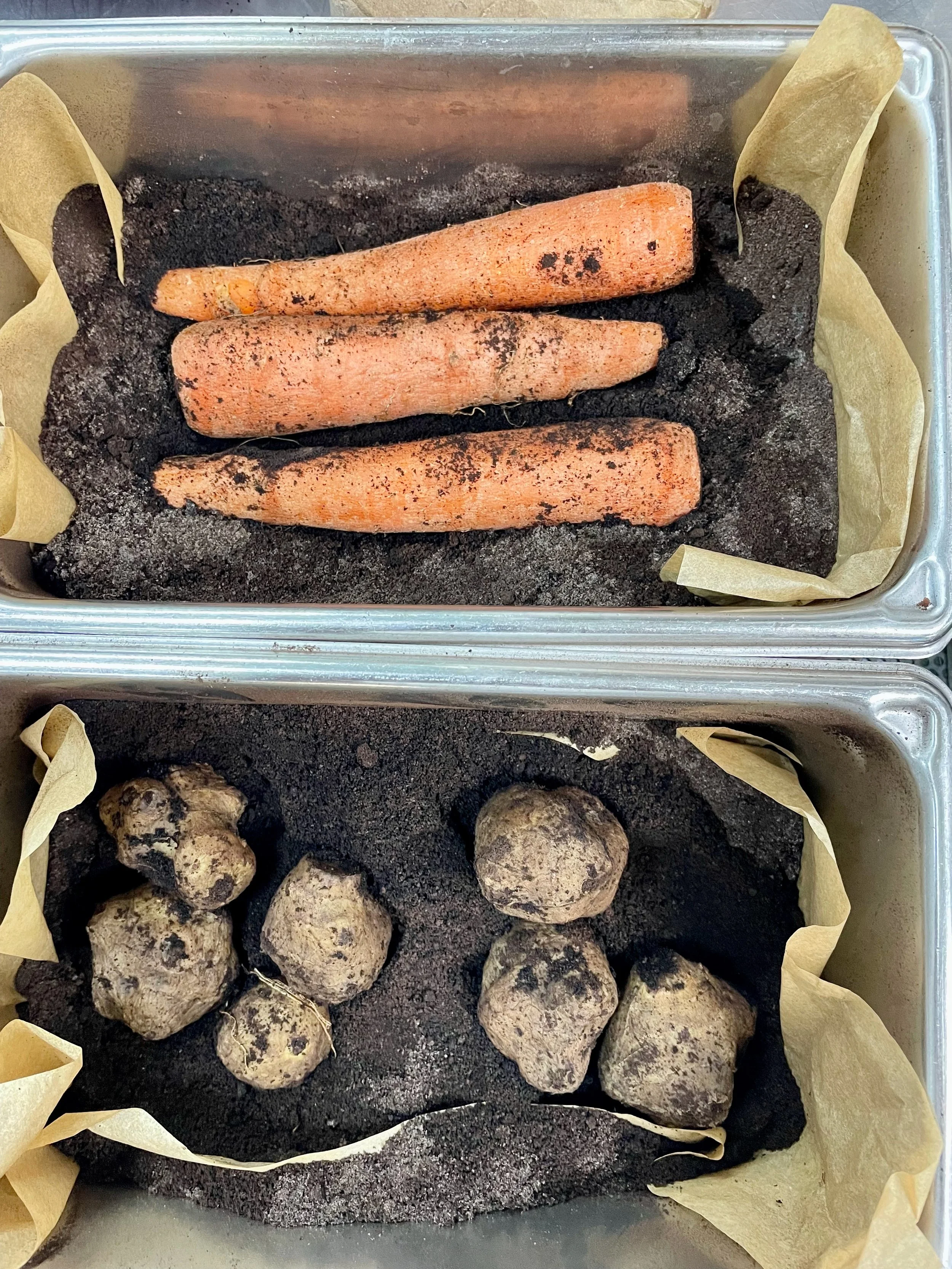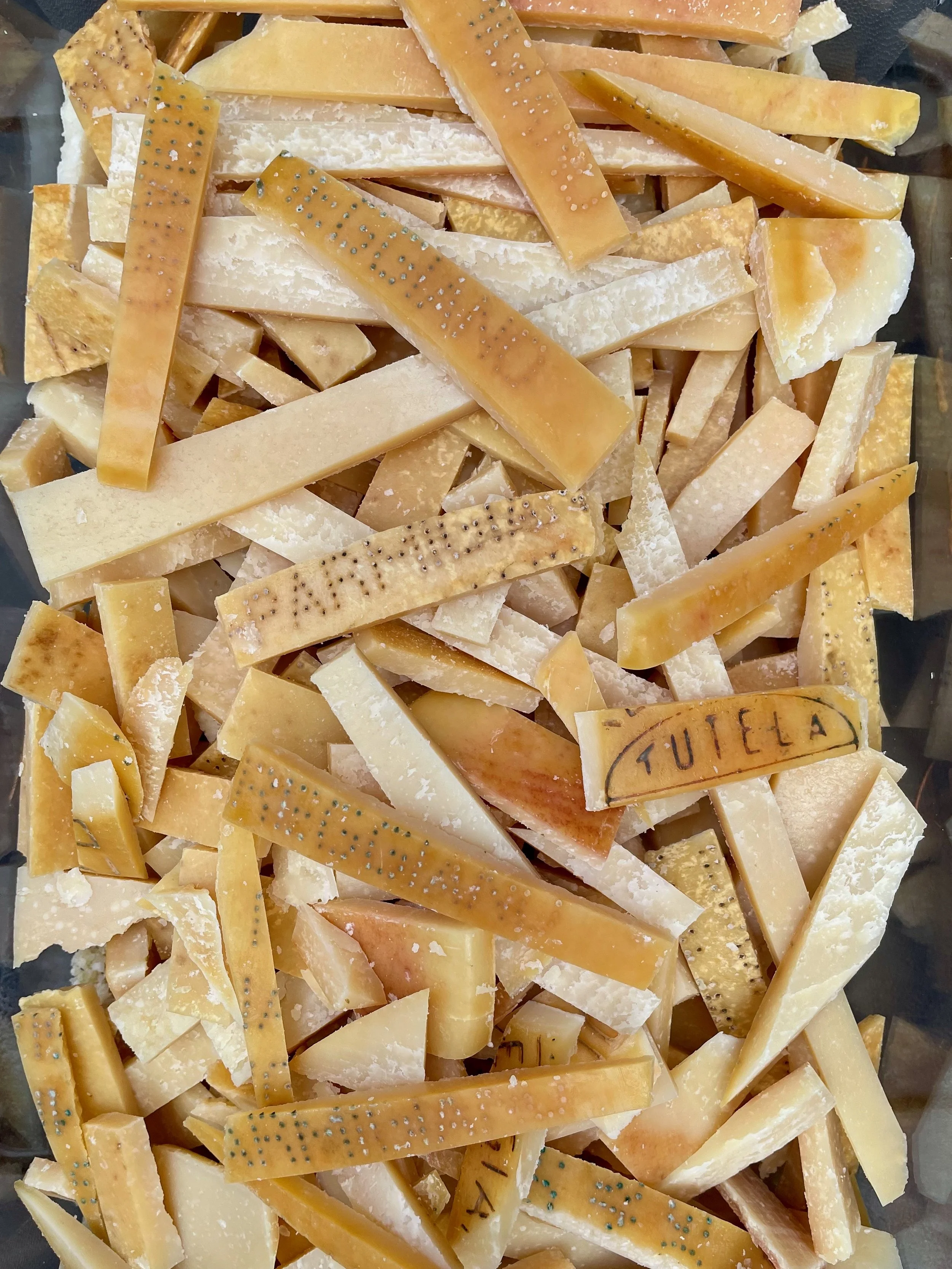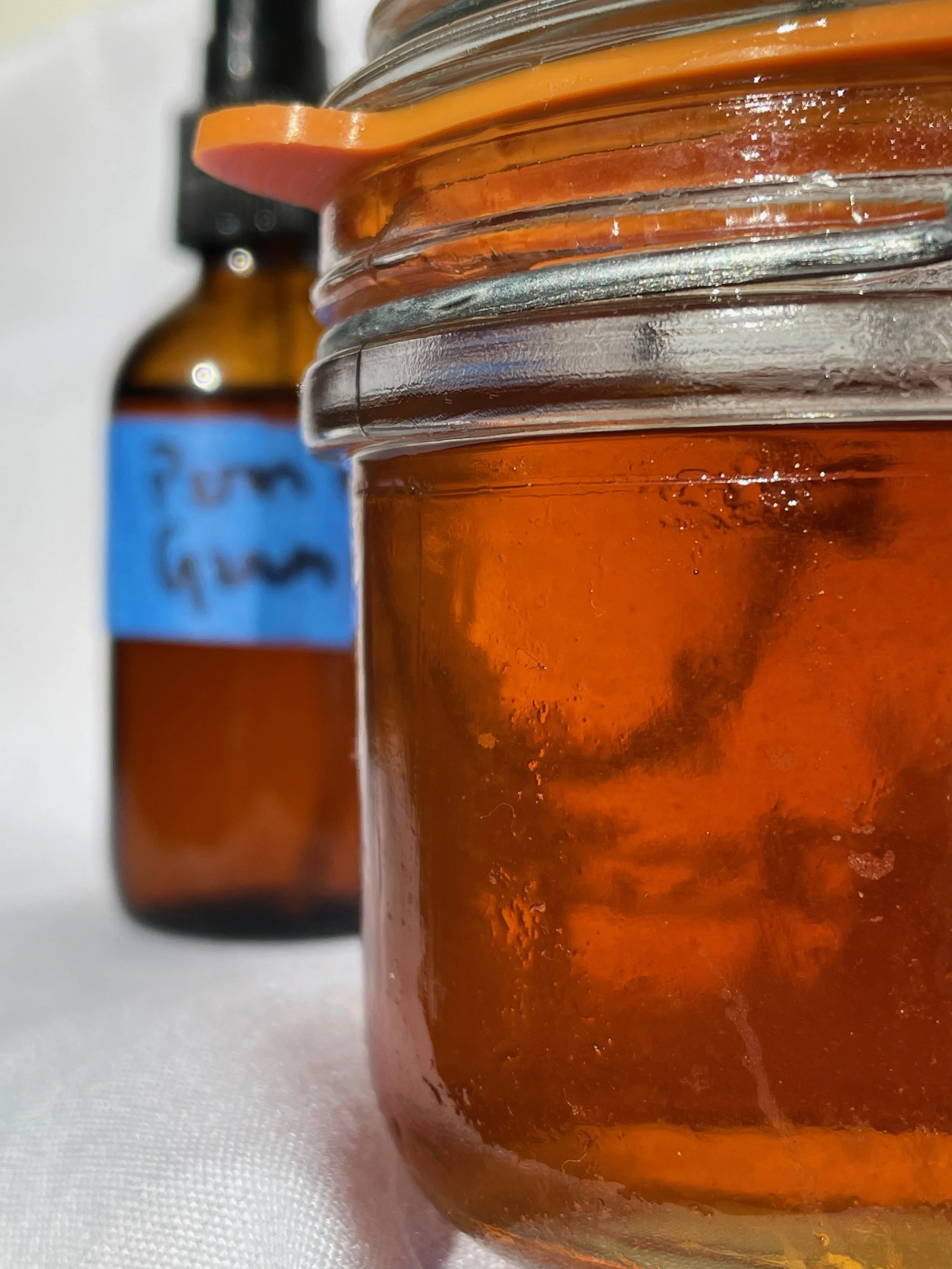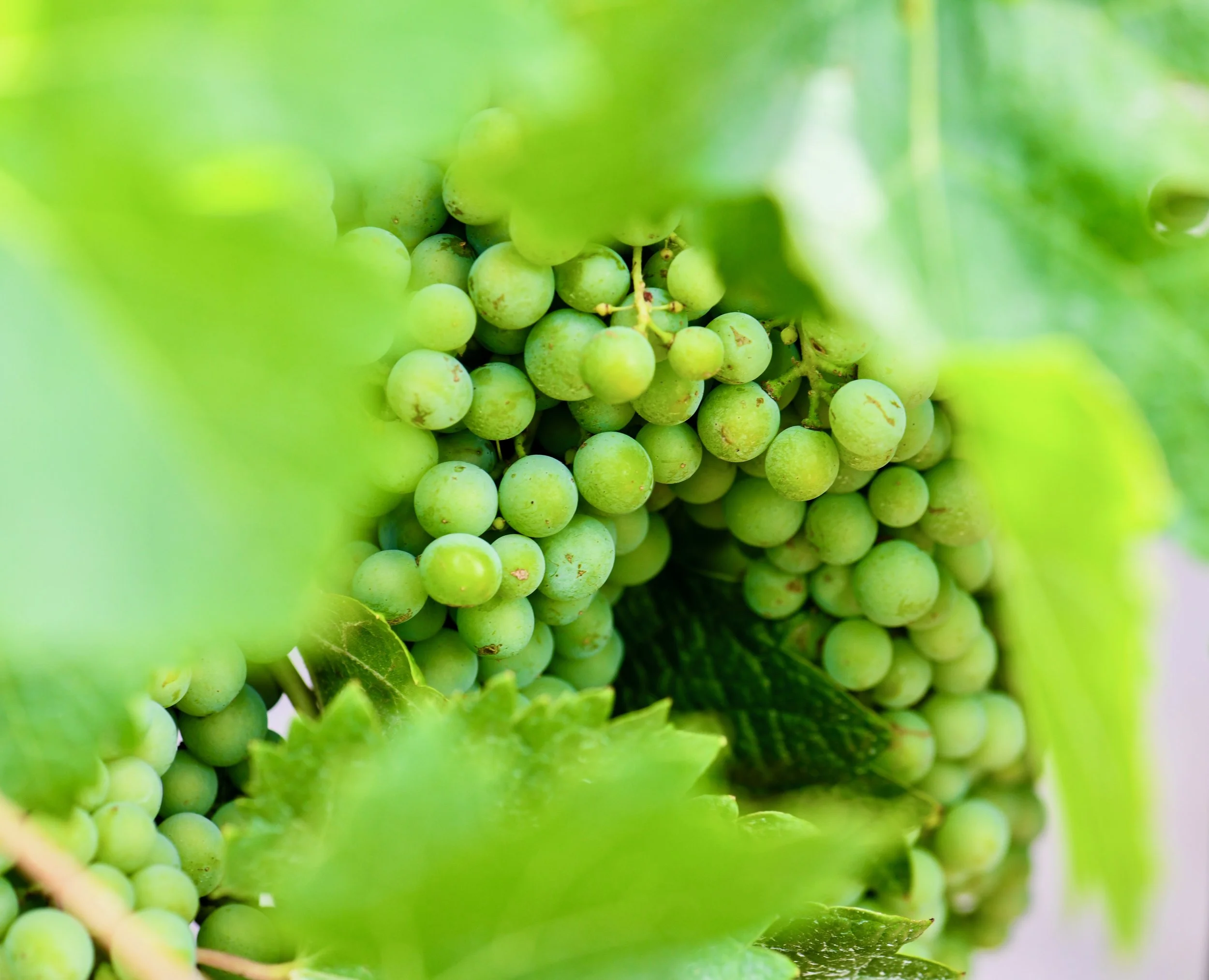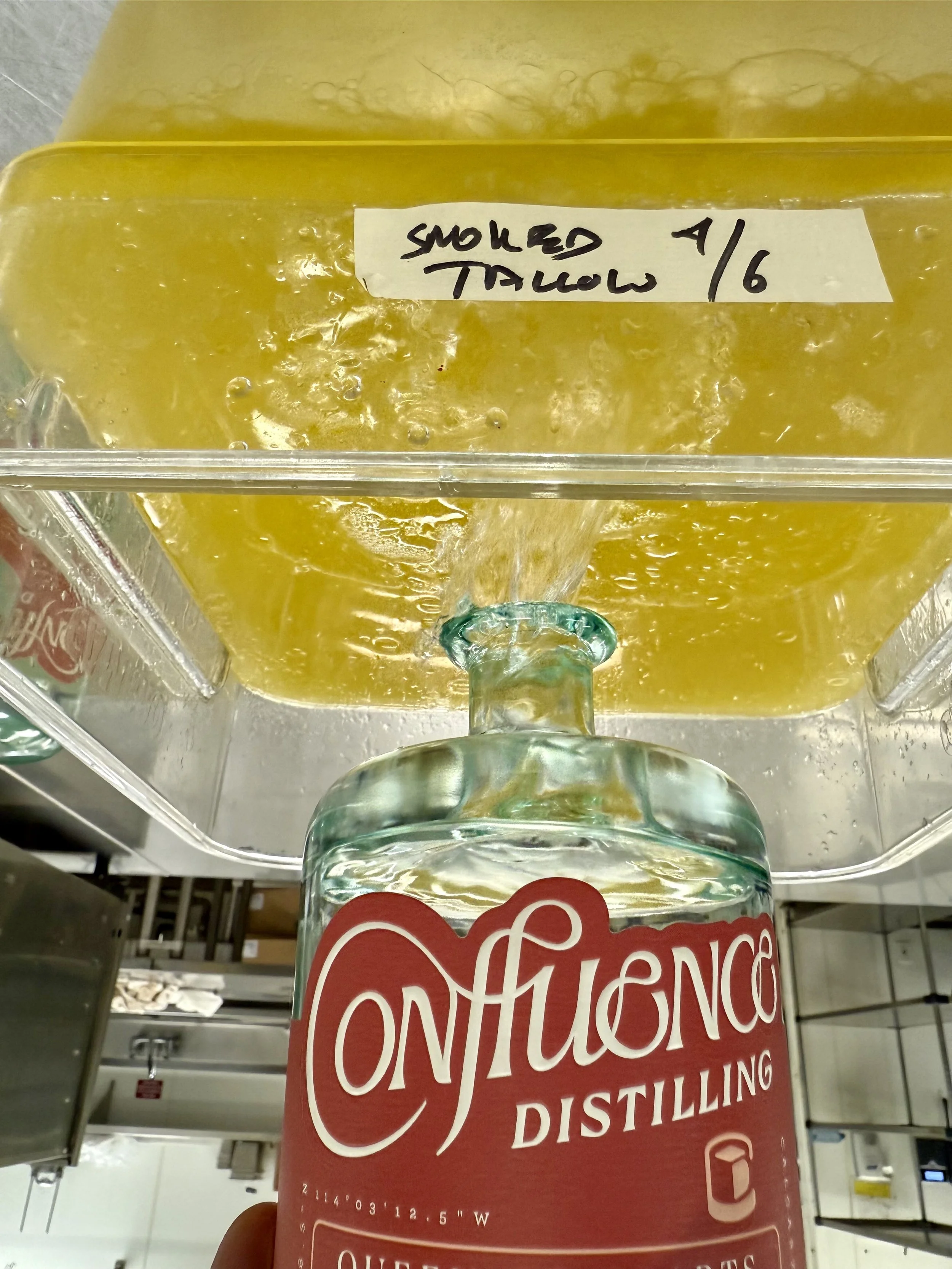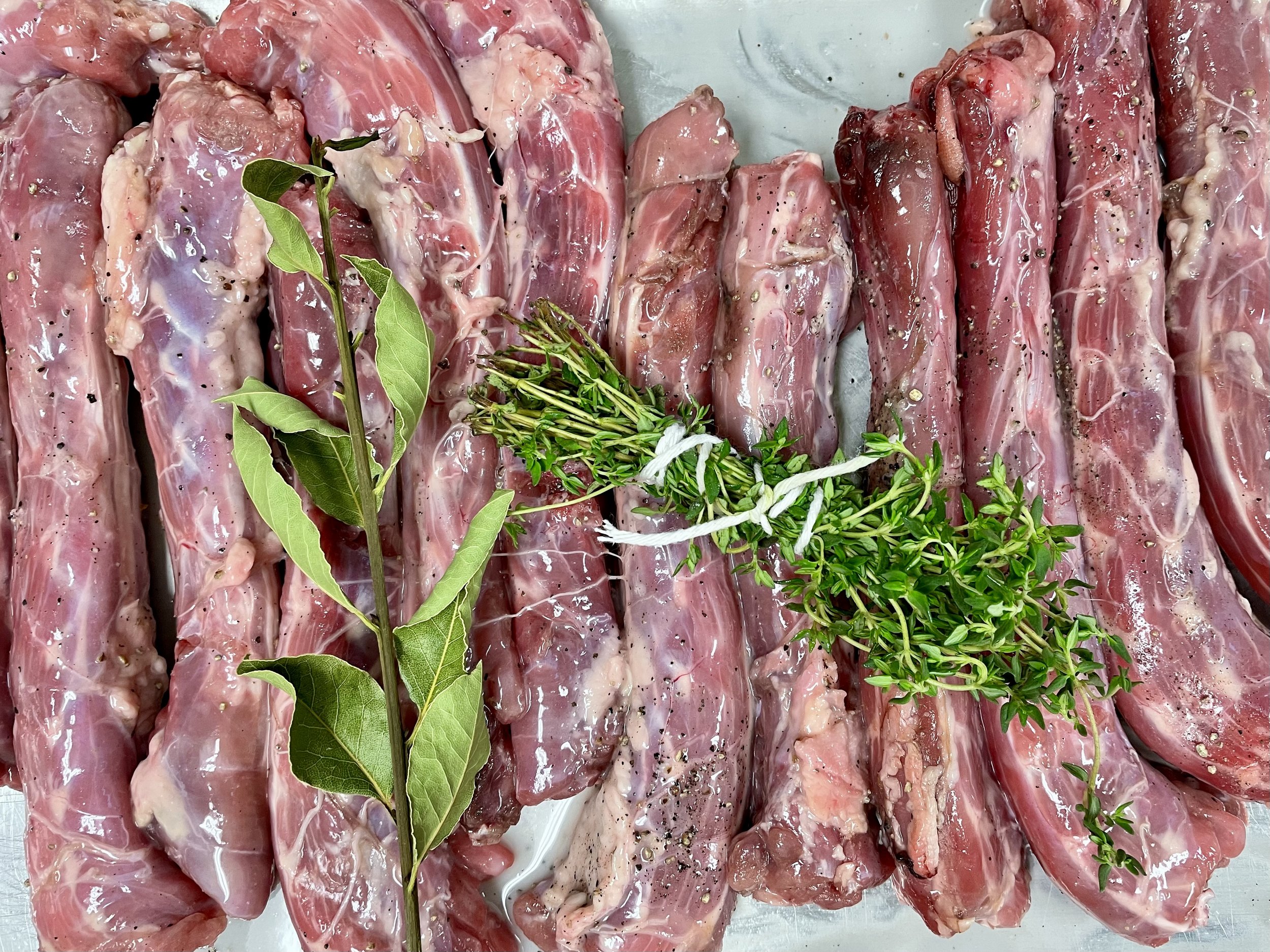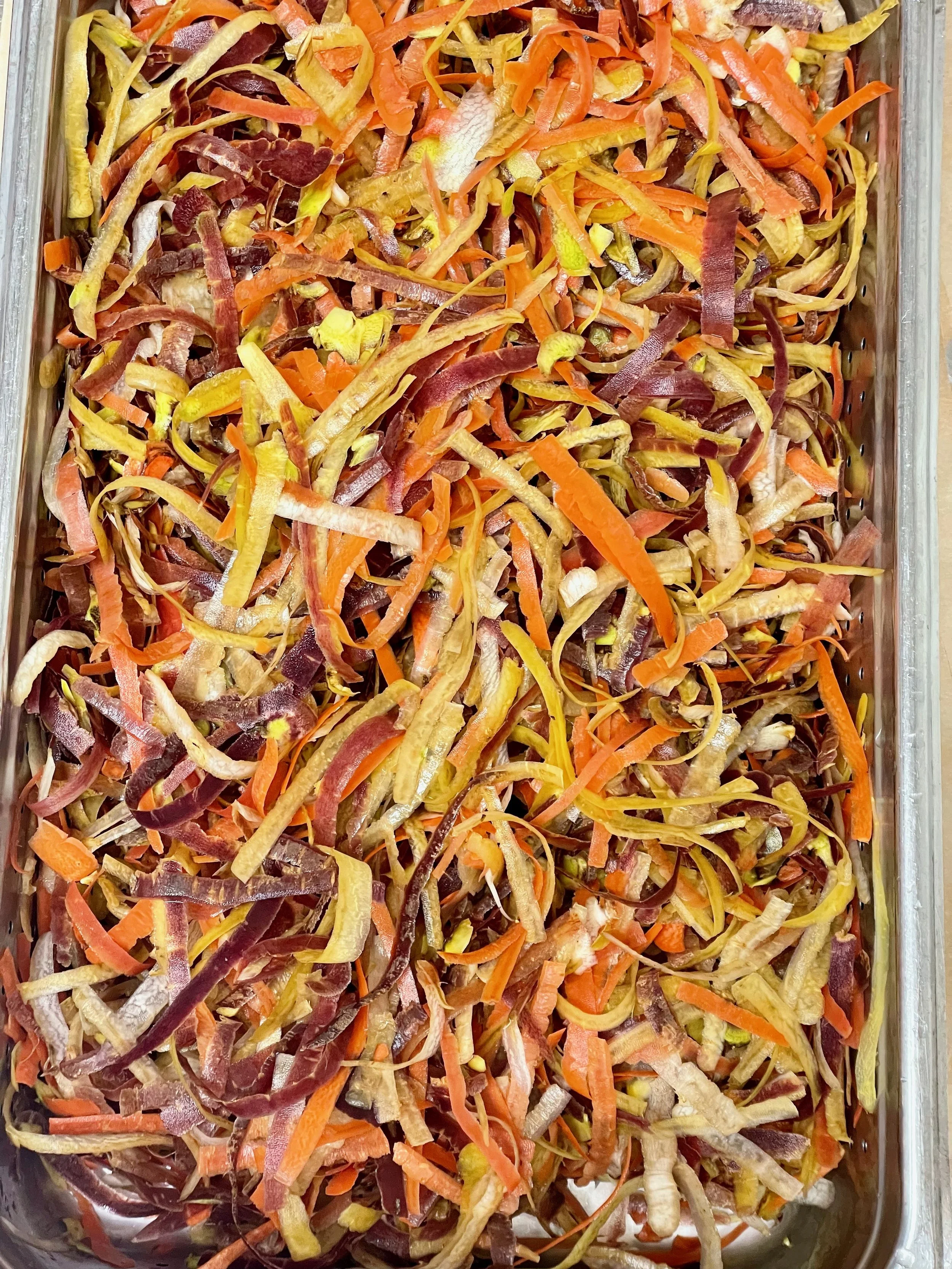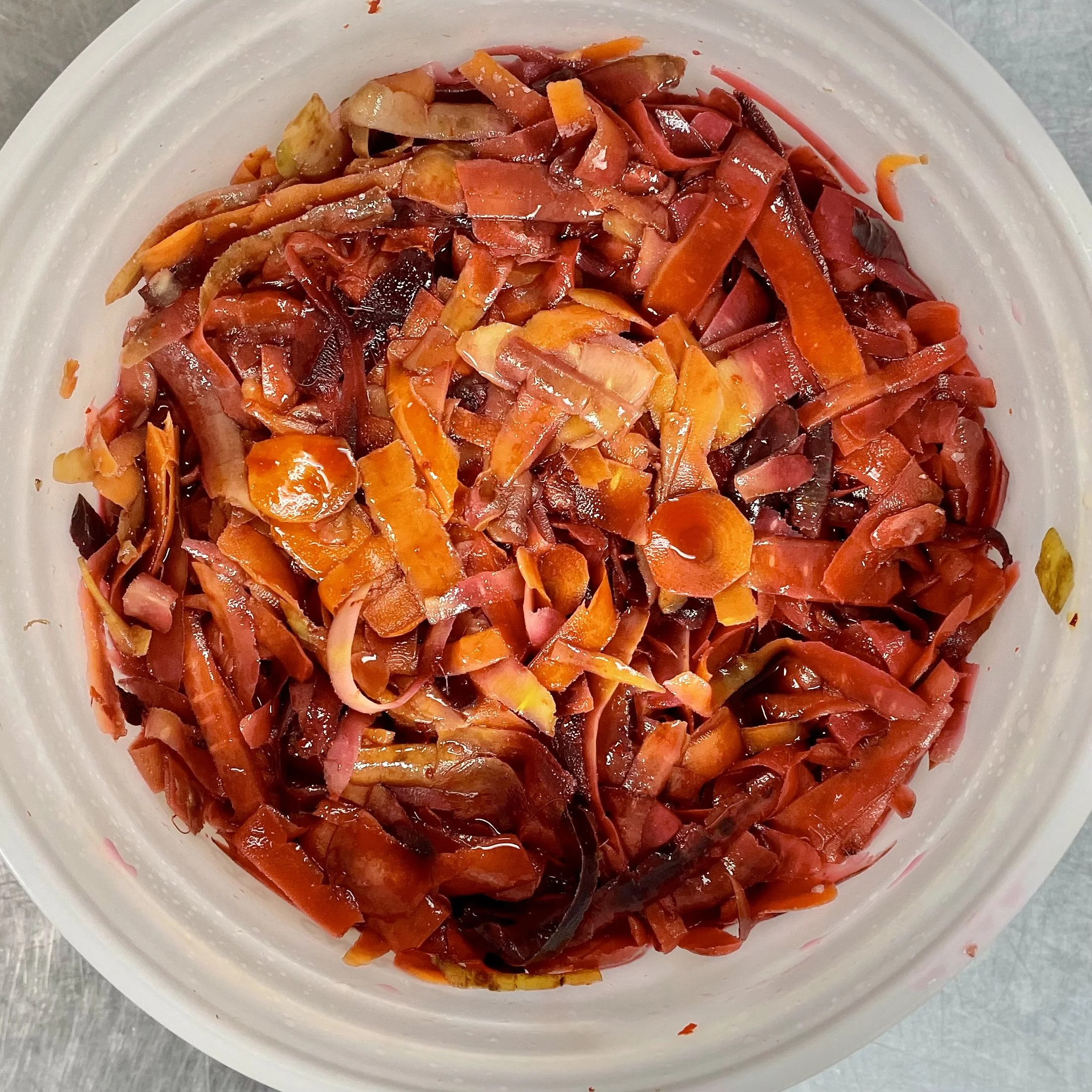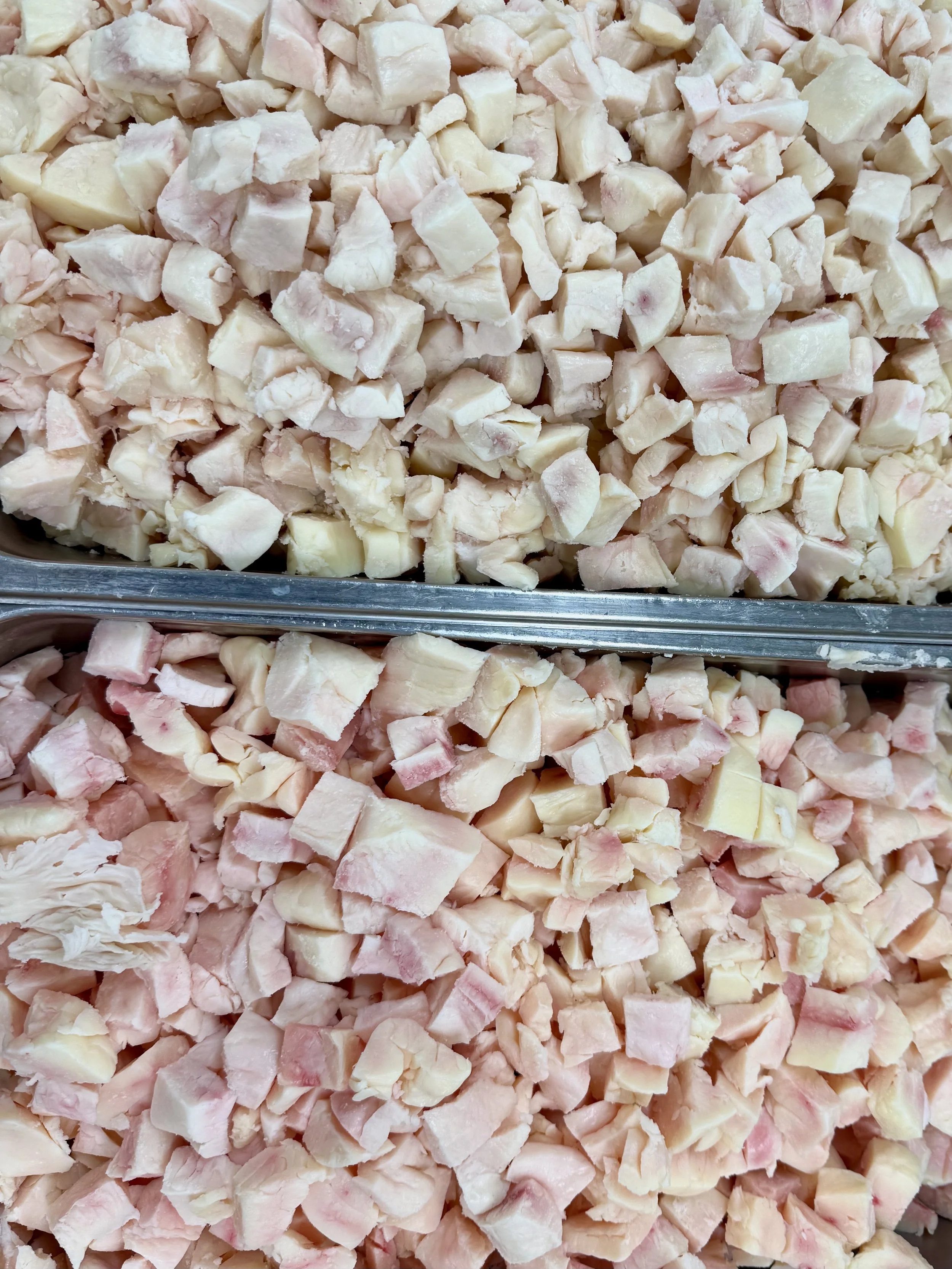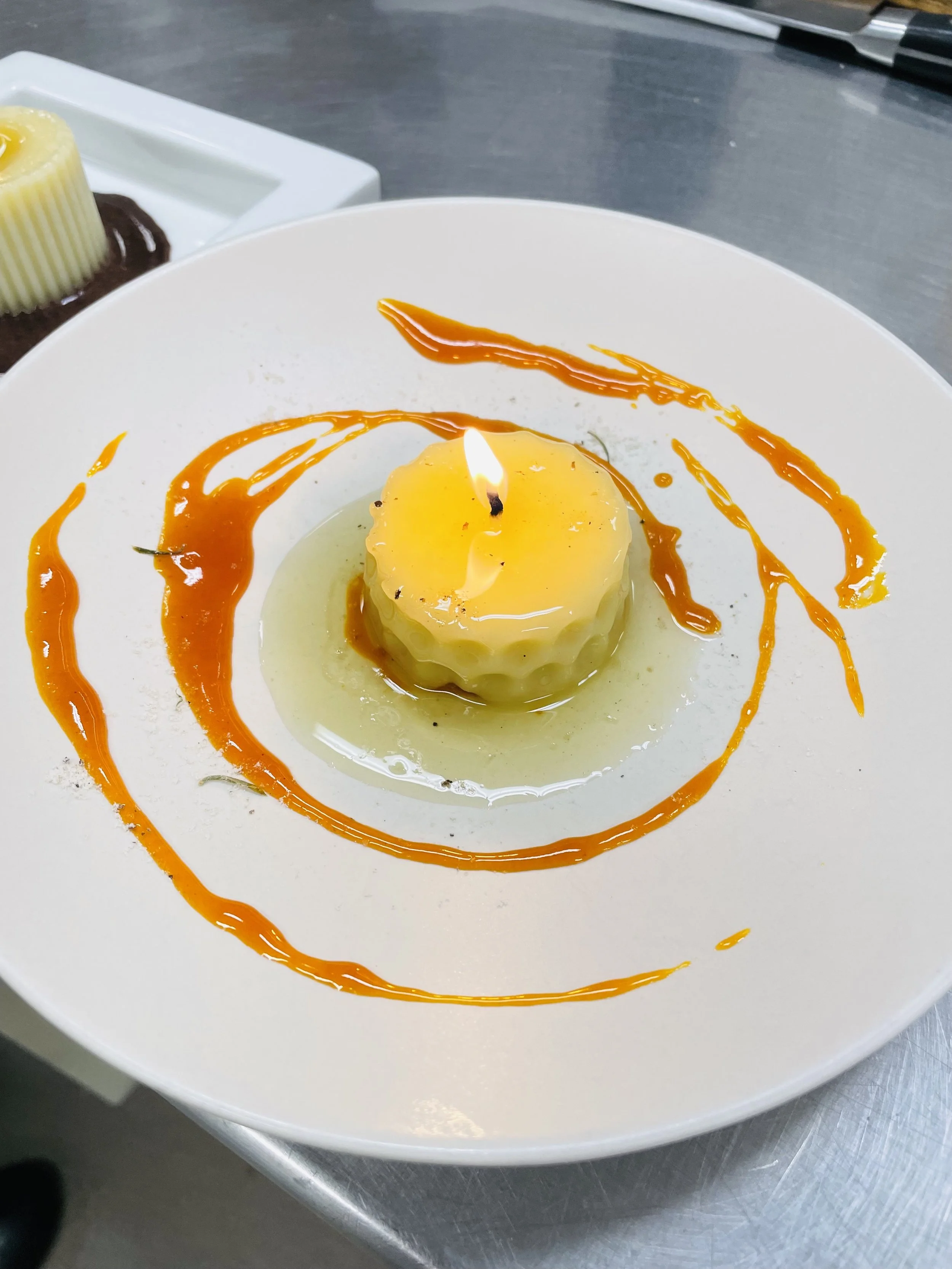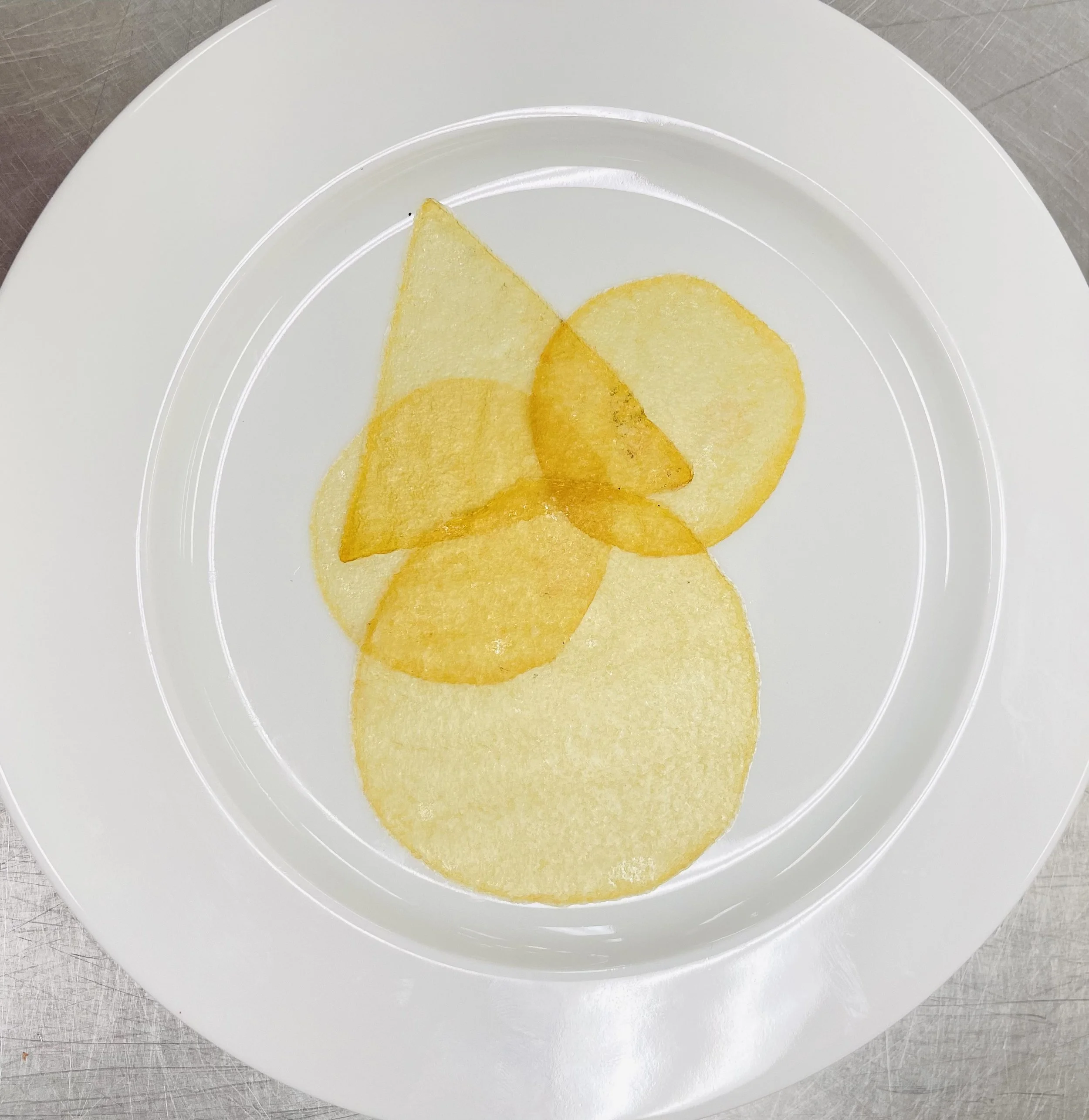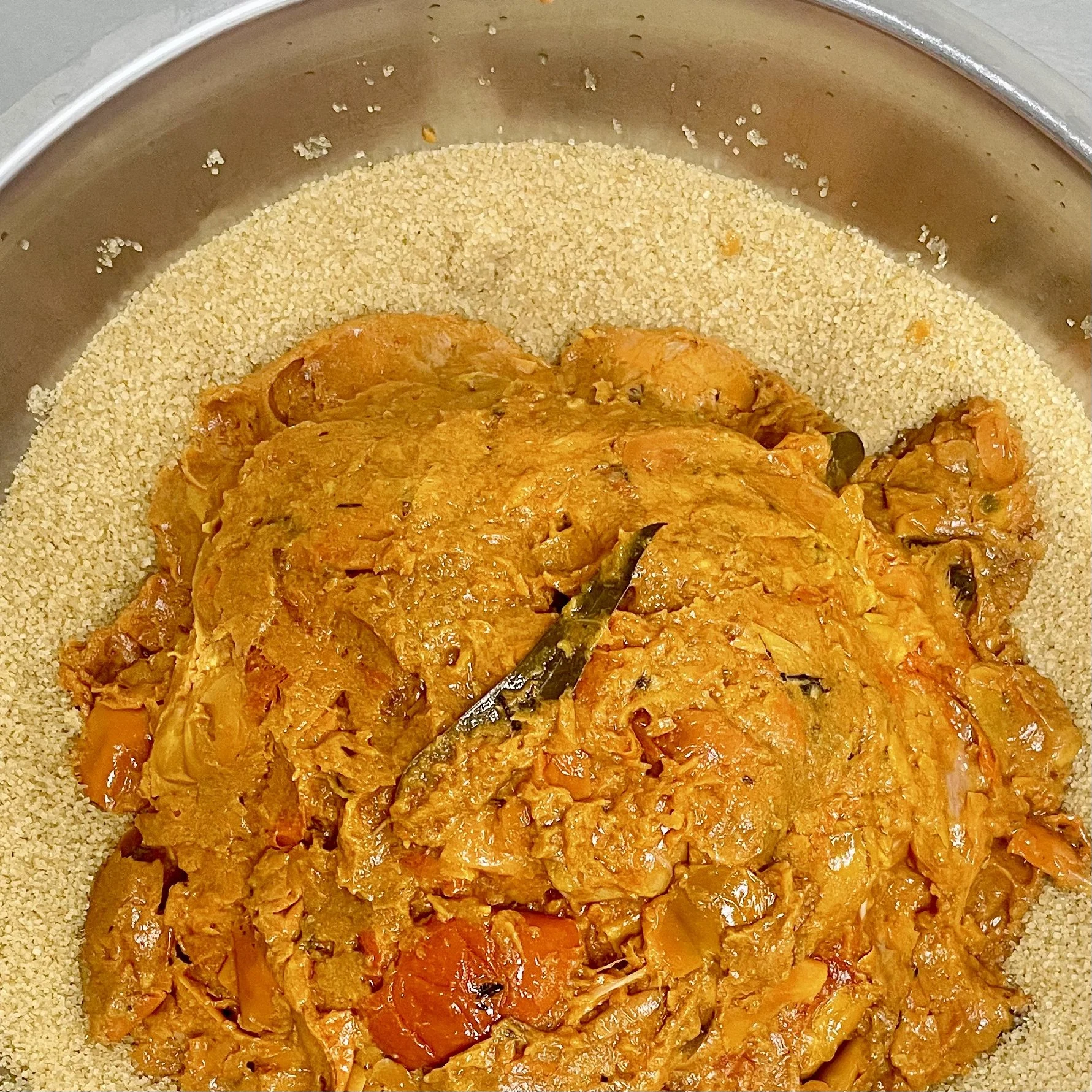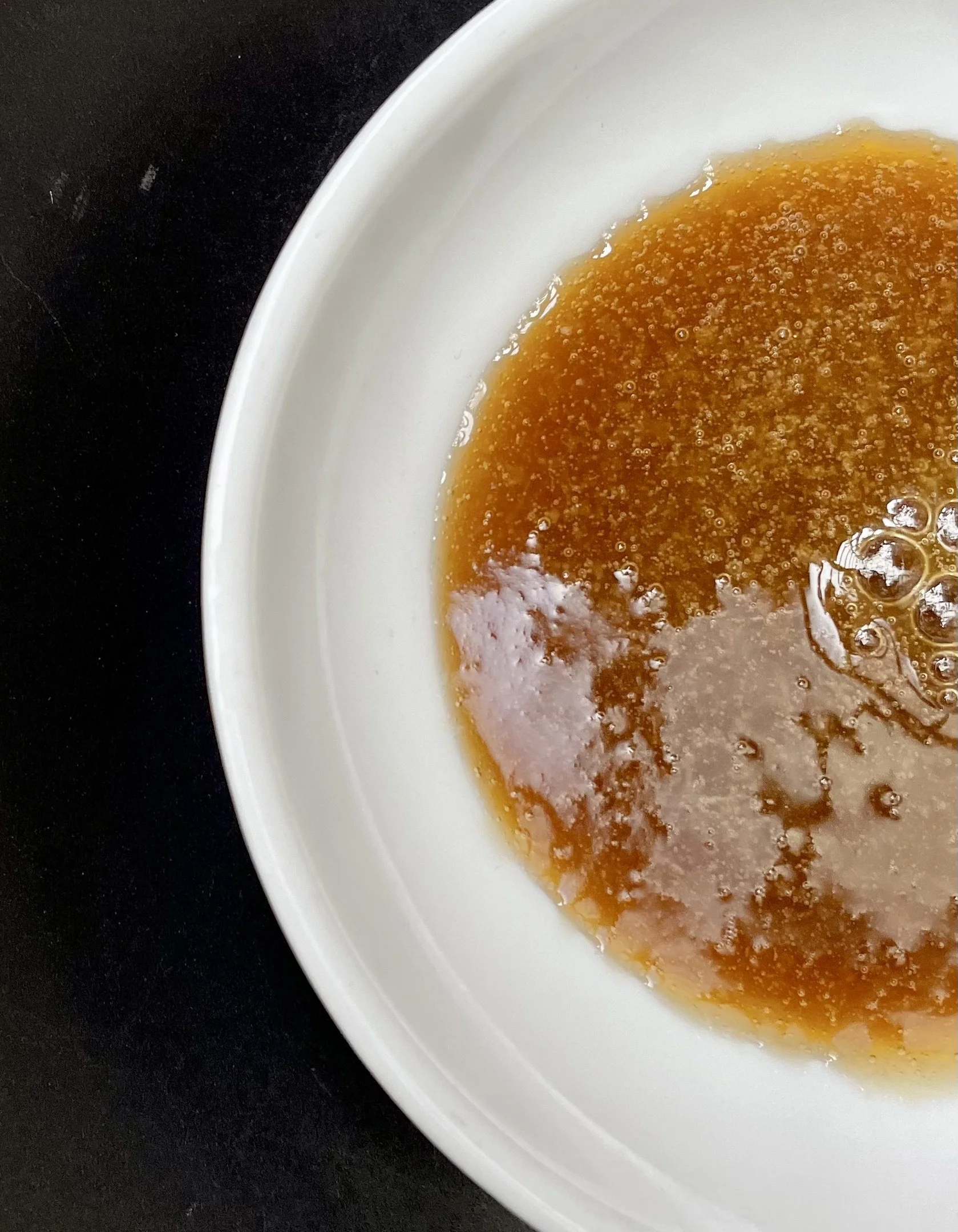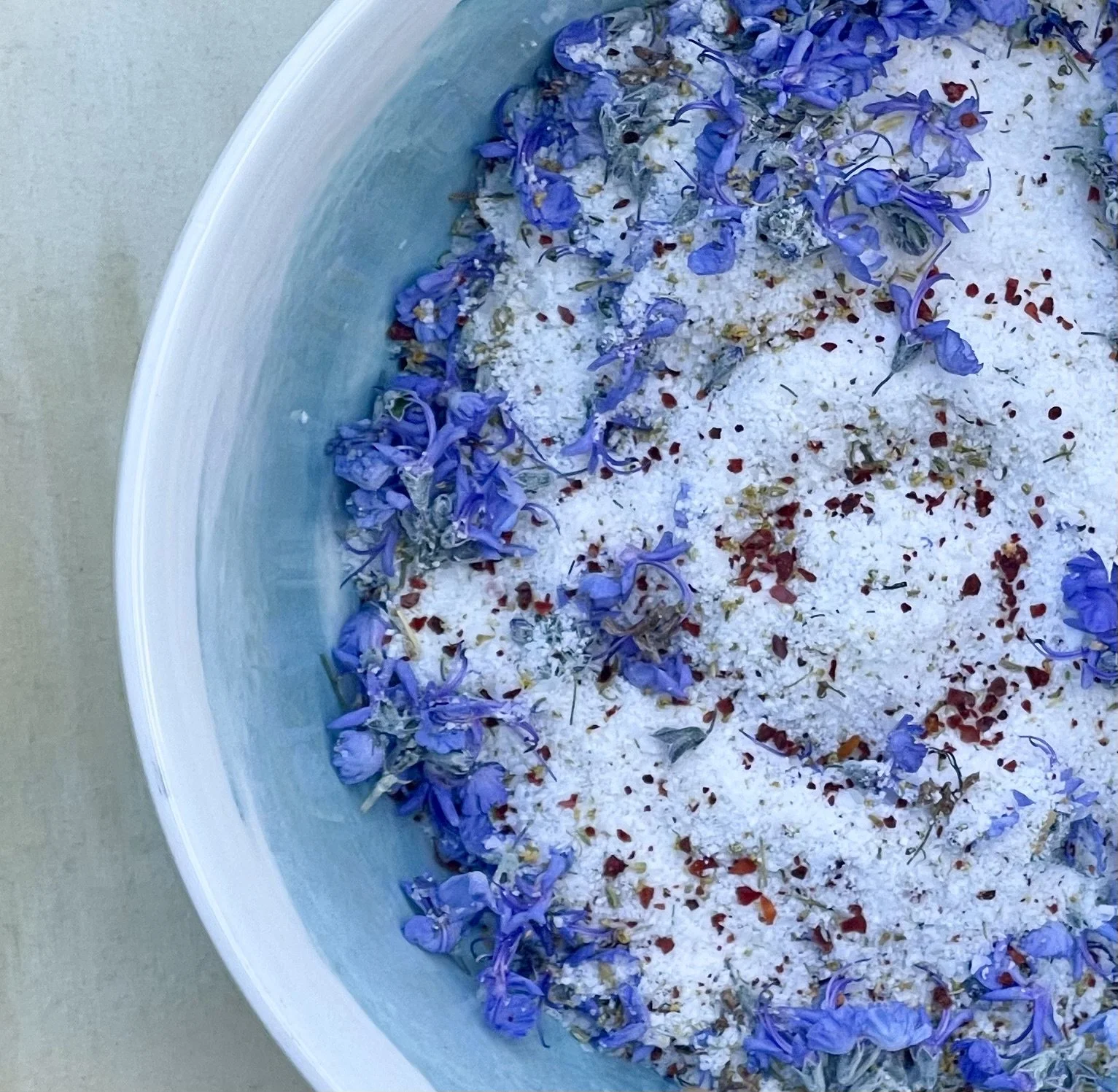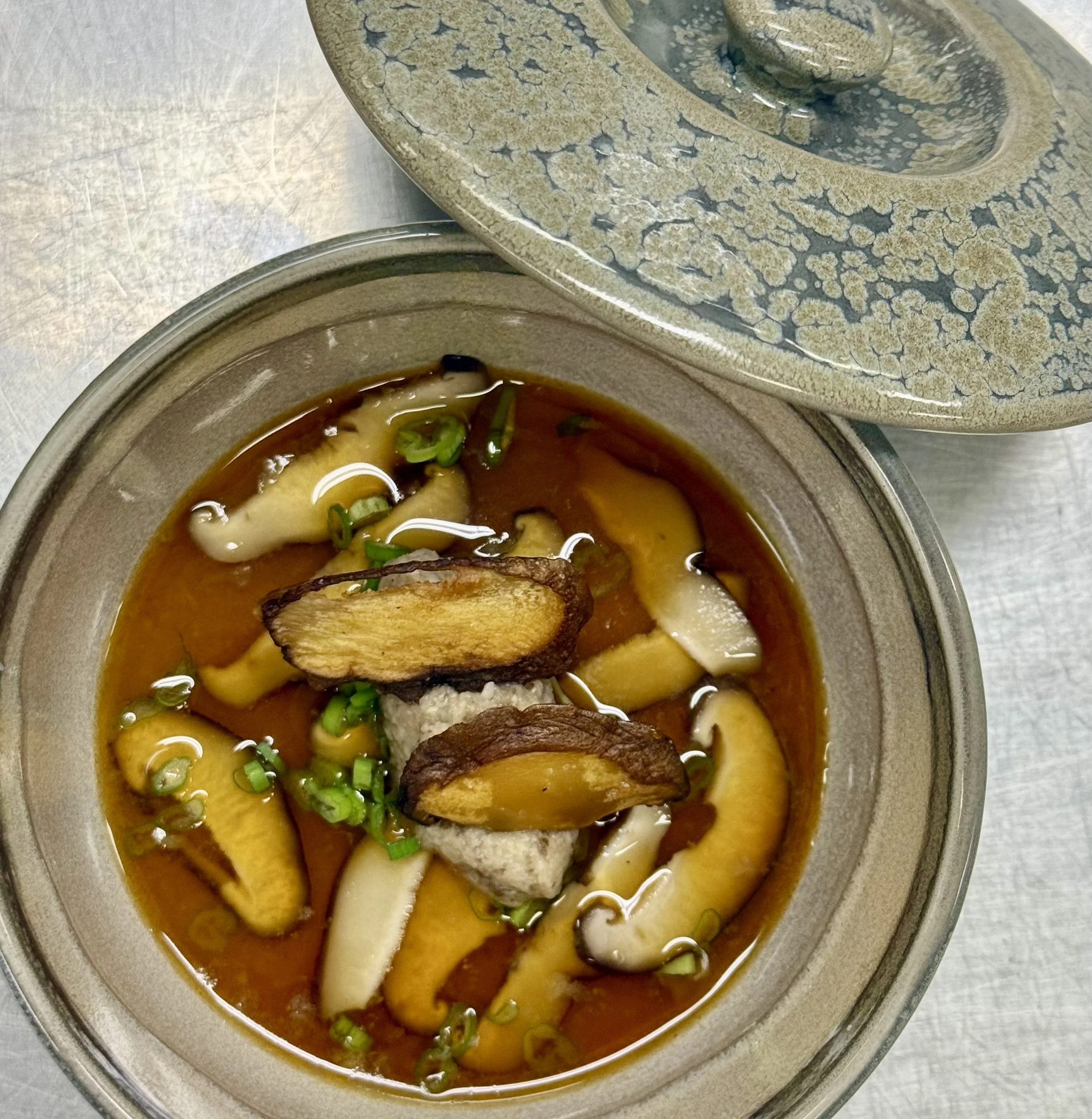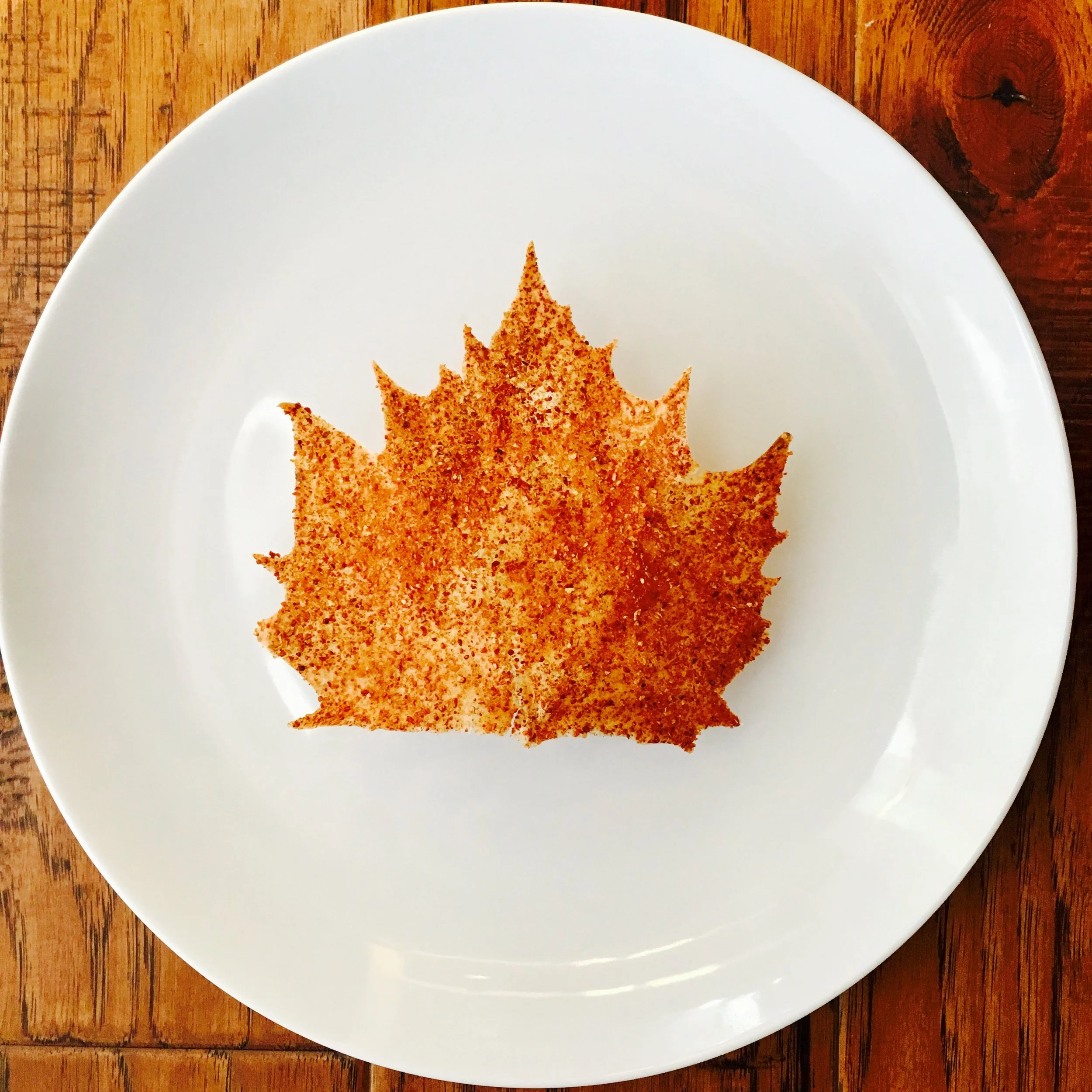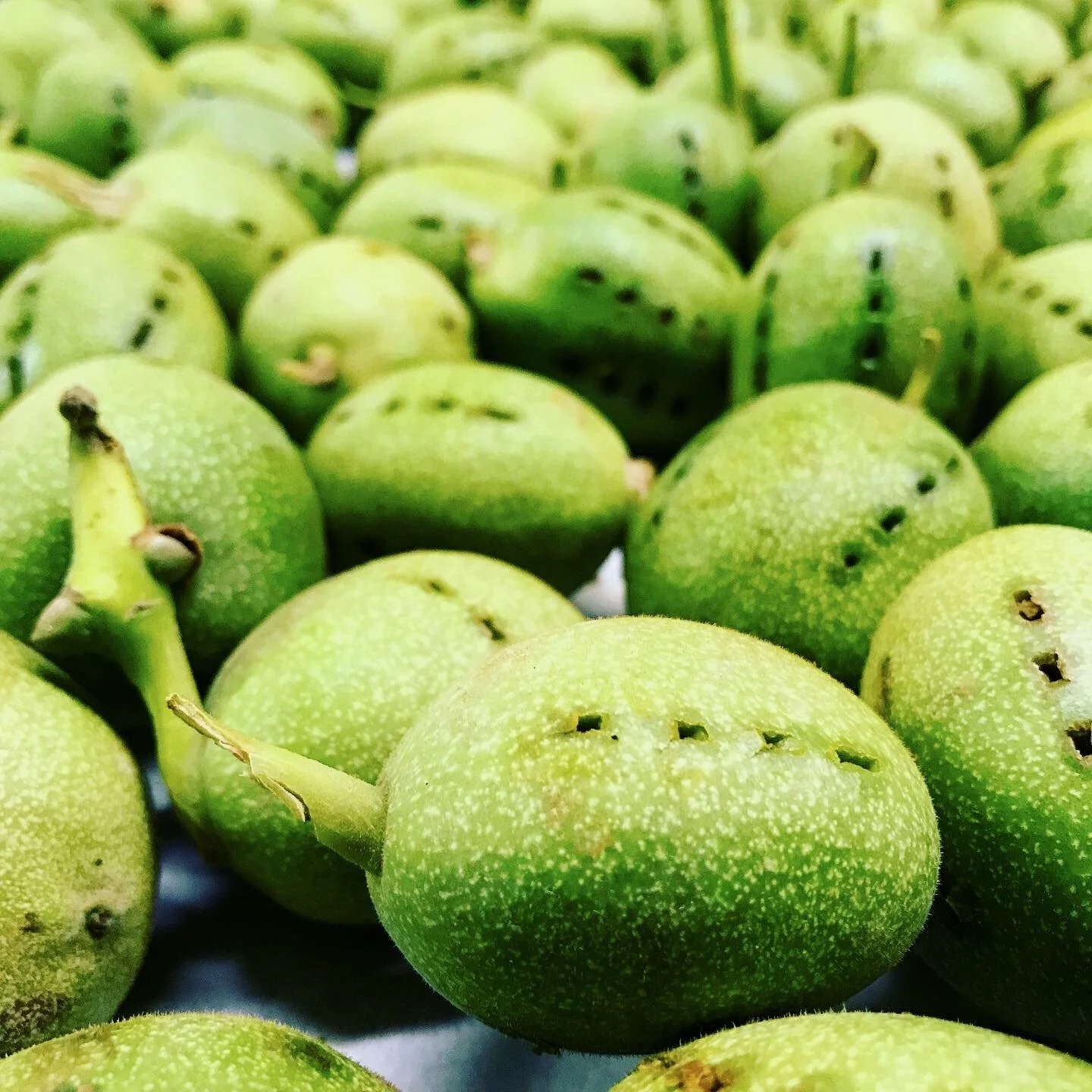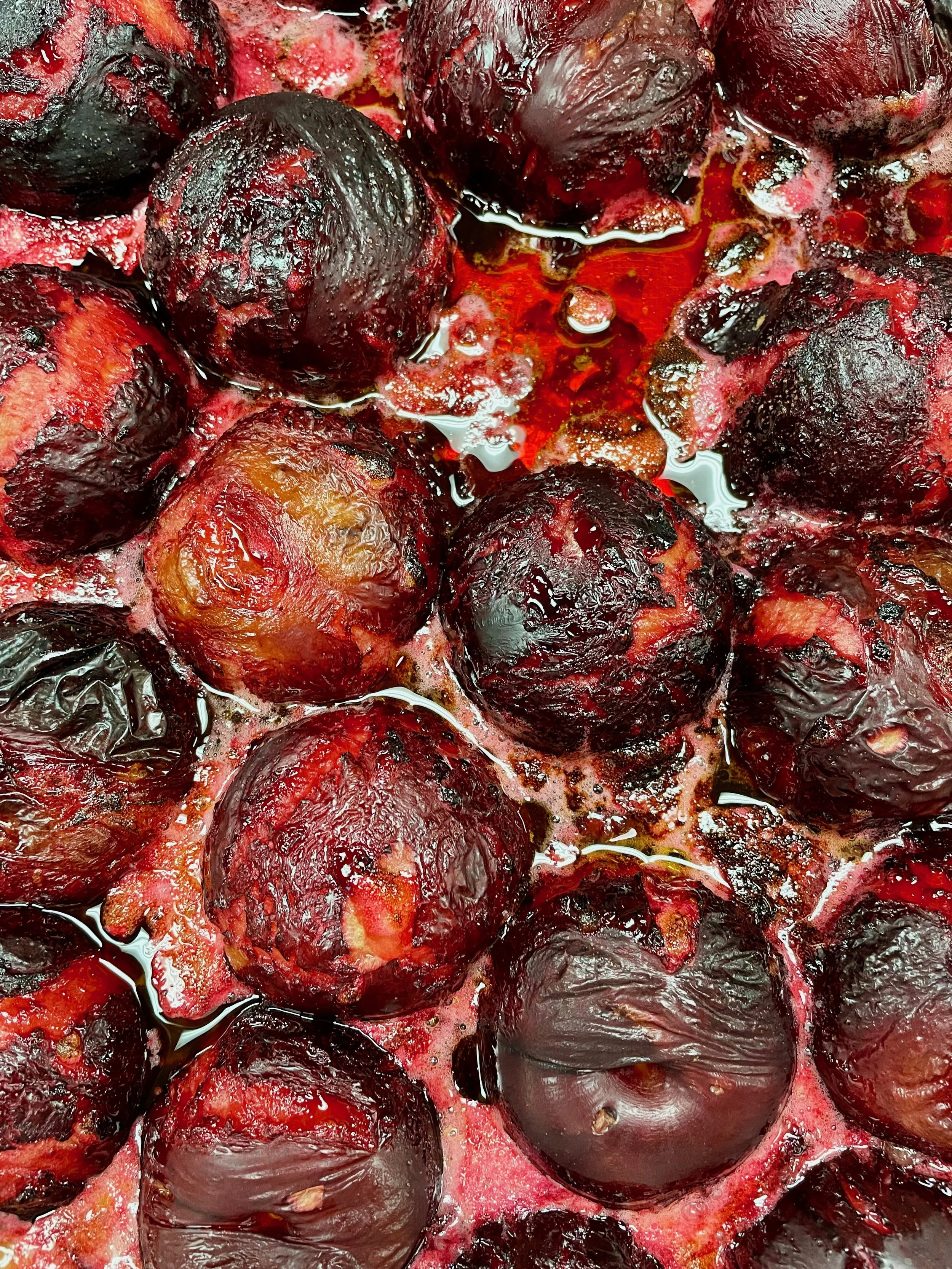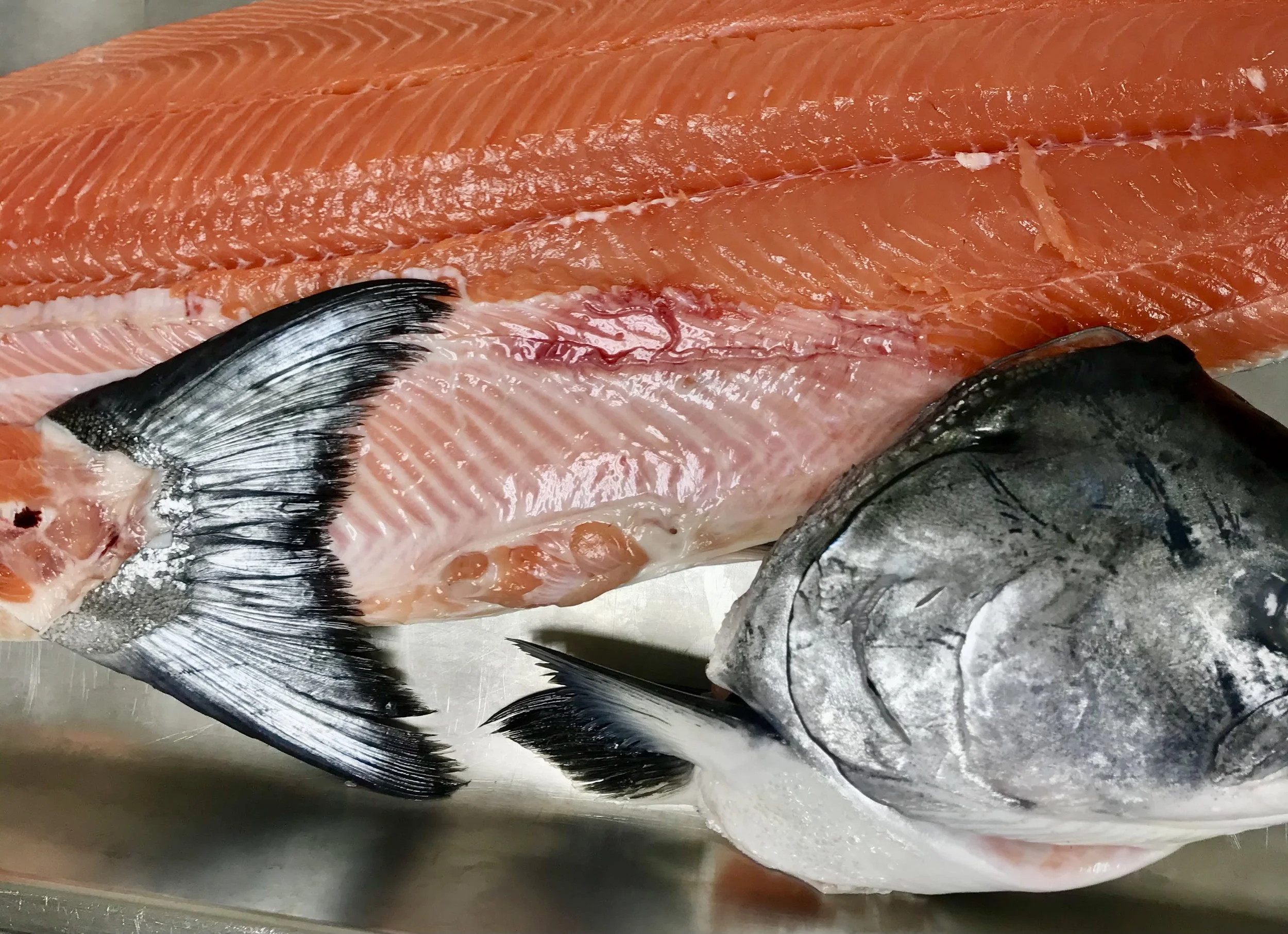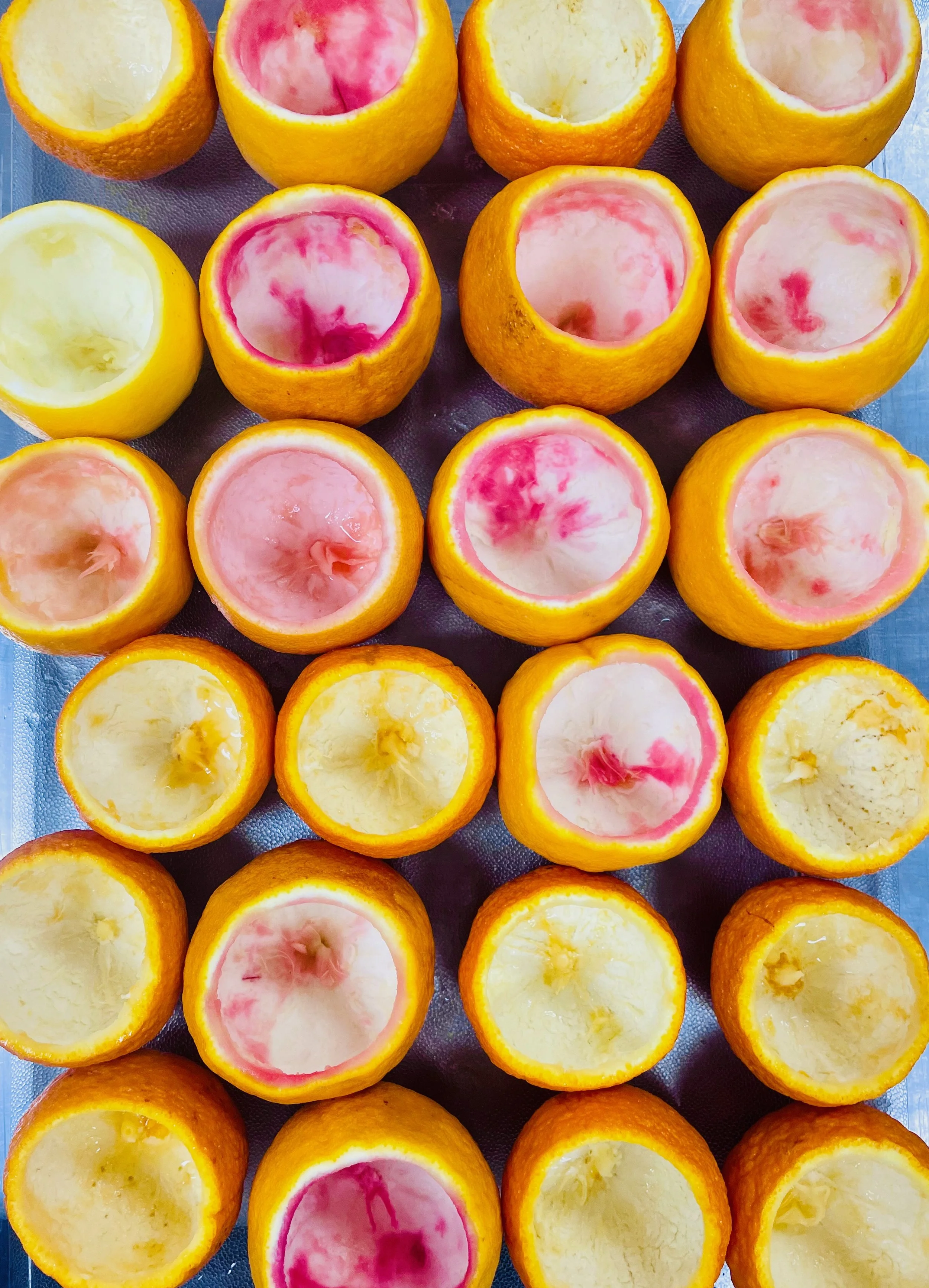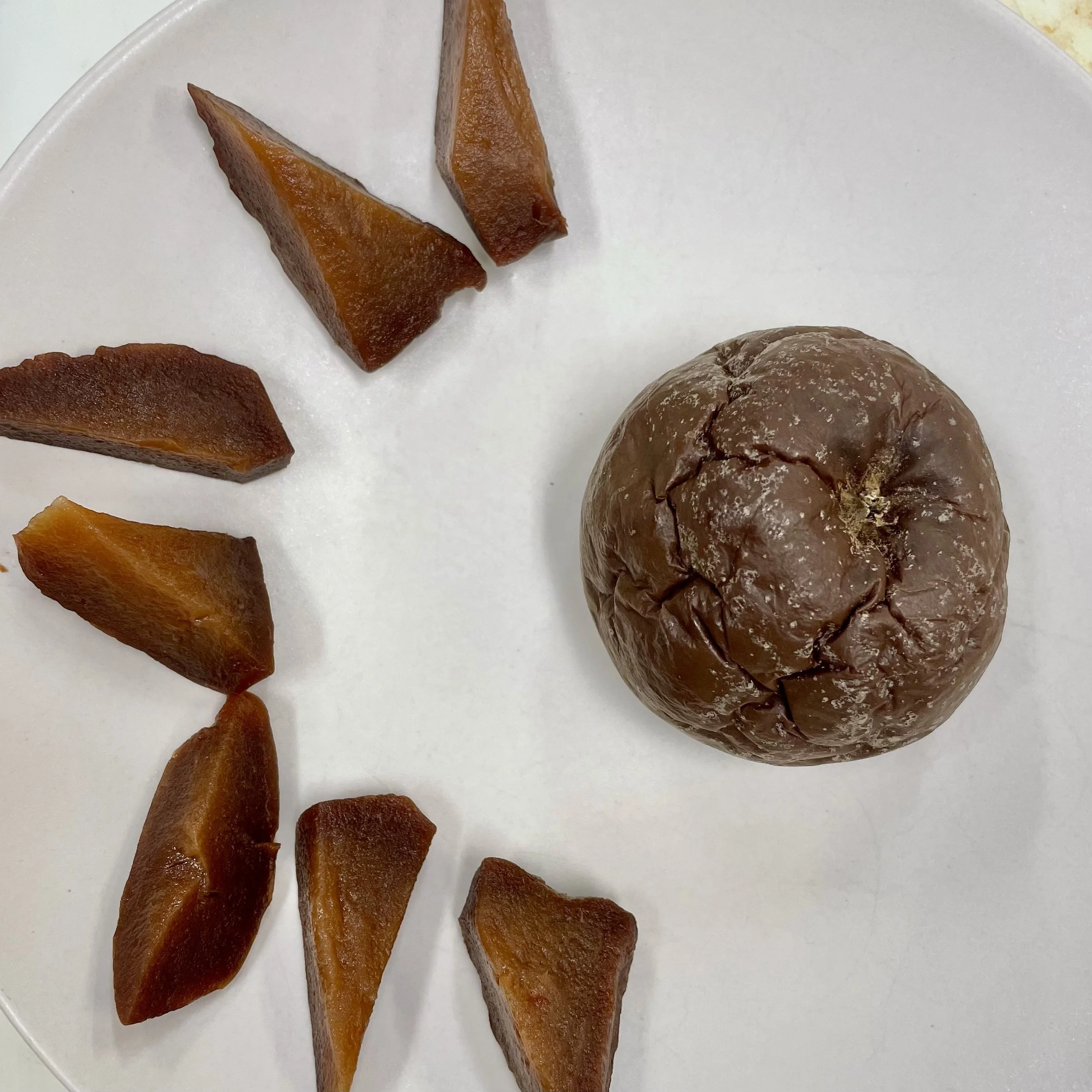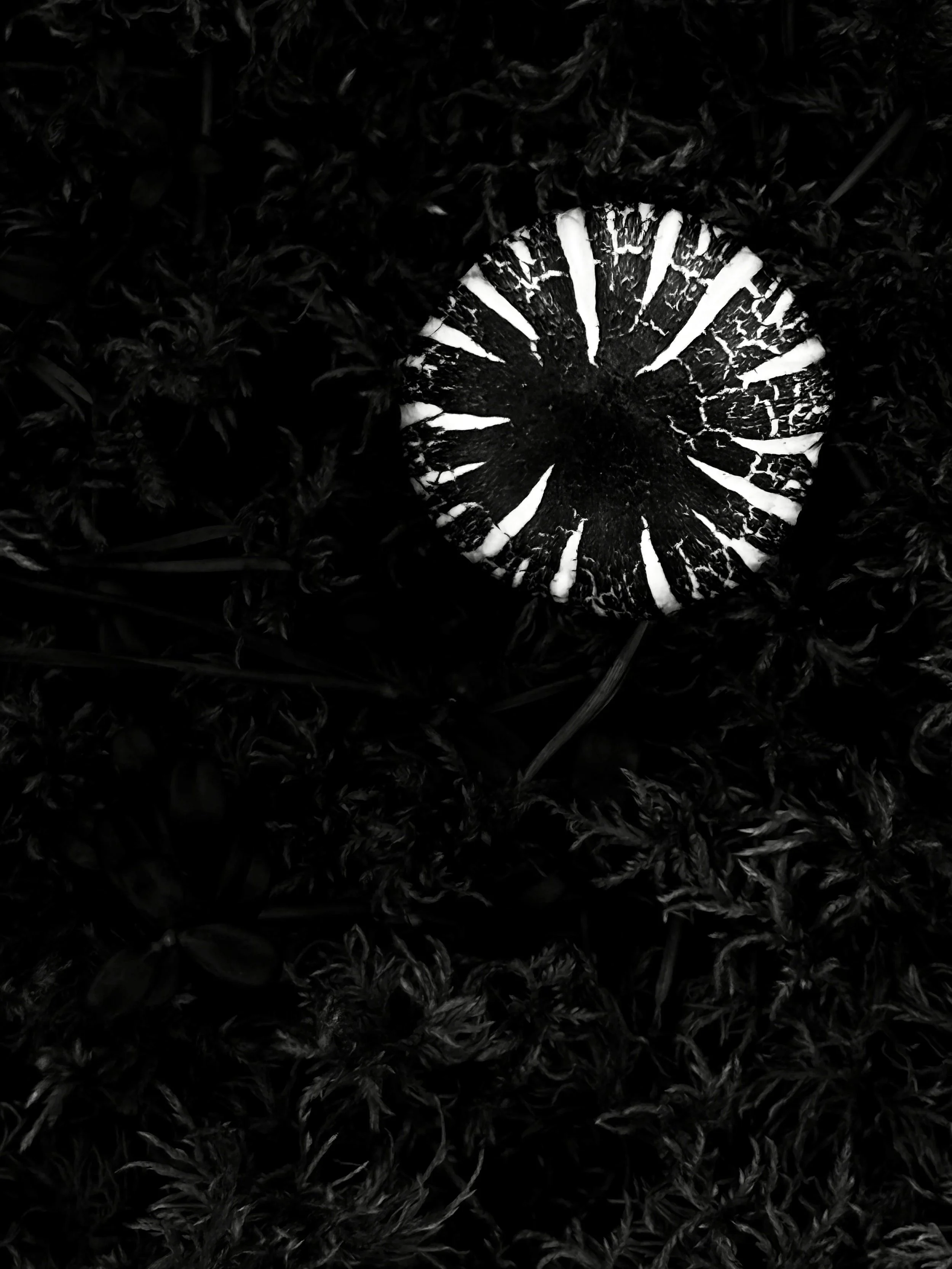
Circular cuisine
I was fortunate to spend time training with the chefs at Silo in London, by Douglas McMaster, a pioneer of the zero-waste movement, and that experience continues to inspire me.
My approach to cooking is rooted in the idea that nothing should be wasted. Sometimes called circular cooking or zero-waste, this philosophy builds efficiency into each dish by using whole ingredients and finding creative ways to up-cycle parts that are often discarded.
Scraps of fruit or soft fruit are easily mixed with sugar to macerate for a few days. The resulting syrup can be simmered to stop fermentation and be used for cocktails, dessert or balancing savory dishes. The strained fruit is amazing when dehydrated.
Ed Tejada, Douglas McMaster, Max MacLean of Silo Restaurant, London, all three have been very inspiring for me.
Pork head terrine, also called headcheese or brawn, is a common way to utilize the head of pigs and sometimes sheep or beef.
Leftover orange and other citrus peels can be simmered in water to reduce bitterness, then pureed to add body to sauces like this orange and habanero hot sauce. They are also great adding body and flavor to braised dishes.
Flower-blossom orgeat soaked Savarin, made with leftover breadcrumbs instead of flour
Red cabbage hearts, leftover from a braised cabbage dish, mixed with salt and lacto-fermented.
Leftover fine lees, removed from wine after racking or filtering, have wine aromatics as well as toasty, earthy aromas from the yeasts. This can be used to help preserve ingredients, much like kasuzuke uses sake lees. Spent yeast can also be used to make garums and amino sauces as the yeasts are full of protein
This is the start of a dish inspired by leftover lees from Markus winery Grüner Veltliner. In this case we added salt to the lees and cured pork loin before roasting.
A new product, Grüner Veltliner lees cured pork loin
A study in clementines, an inspiration to utilize as much of an orange (and tree) as possible. Underneath is a moist cake made with whole poached clementines. Surrounding that is a sabayon made with orange blossoms. On top is a frozen disc of clementine juice and zest, and around is an oil made from the orange leaves.
A local scorpion pepper and blood orange hot sauce, utilizing the whole blood oranges, blanched to remove bitterness from the rind.
A big part of circular cooking is imagining how to use the entire animal. This is a whole Dorper lamb broken down to use in various dishes throughout the week.
One presentation of the whole Dorper lamb; wood-fire roasted leg with braised shoulder, with fava bean purée, BC fiddleheads, roasted ramps, black garlic
Braised sunflower hearts from the flower garden, very similar to artichokes, these are the peeled and trimmed base of small sunflowers. The color change is natural when they are cooked with acid like à la barigoule.
If you are close to eucalyptus groves, these insects, called Lerps, create a carbohydrate rich sweet shell, which can be harvested to make Lerp Sugar, and a way to help control a pest of eucalyptus.
Leftover coffee or espresso grounds can be added to pasta as part of the flour, like this espresso Creste di Gallo
Legs and shoulders from a whole regeneratively-raised pig can be hung to age for days or a few weeks while you utilize the loin and belly. Aging tenderizes and changes the flavor.
Some of the countless ways to utilize the many parts of a pig. From the top, cured pork tenderloin, leg pressé, shoulder rillettes, skin chicharròn, with fresh and pickled hakurei turnips, kumquat mostarda
Beekeeping is so rewarding and helps you realize how connected everything is. There is so much to learn! Hive products include honey, of course, as well as beeswax, pollen and propolis, each of which has unique applications and flavors to add to your cuisine.
Beet stems can be prepared separately from the roots and leaves. A good way is to pickle or lacto-ferment them to add a pop of acidity to a dish.
Infused waters are a simple, elegant way to use small amounts of herbs, edible flowers, and fruit scraps—peels, leaves, stems, and even pits. They carry herbal-tea–like flavors that are both fragrant and refreshing, making them a lovely start to a meal or a gentle palate cleanser. The variations are endless, and the waters can be frozen into ice as well.
Coffee or espresso grounds can be used as a bed for roasting vegetables, adding subtle roasted and earthy notes to vegetables.
Parmigiano Reggiano rinds have a lot of flavor locked inside. They are most often used to infuse into cooking tomato sauces or broths. They can be slowly cooked with milk or cream to use in various recipes, and the softened rinds can be cut and fried. I have also made garums with them.
Parmesan rind garum using fine chopped rinds, koji, salt and water, has an umami rich, cheesy flavor.
Verjus... Wine grapes are usually thinned in late summer to help boost the brix of the rest of the grapes. These thinned grapes are still green, unripe and sour, and they make a great sour condiment called verjus from a product that many times is wasted in the vineyard
Leftover beef fat, slowly rendered and smoked, is useful in many ways, including for fat-washing spirits, which mellows and adds richness and beefy aromatics to the spirit. This is from a wagyu beef fat-washed vodka collaboration with Confluence distillery
Duck necks (and turkey, goose, etc) can be saved and cooked in fat like confit (or braised). It is surprising how much meat you can get for pasta fillings or ragu, and they have a really great flavor.
Carrot peels, in a rainbow of colors, can become a quick lacto-ferment, adding a splash of color and acidity to a dish
Rainbow carrot peel lacto-ferment
Beef suet is the crumbly fat that surrounds a cow’s kidneys and loins. It melts at a relatively low temperature—around 113-122 °F (45-50 °C)—producing a clean, neutral fat ideal for pastry doughs, mincemeat, and delicate frying where a light texture and flavor is desired.
Beef fat trimmings are from the excess fat on and around the various muscles and are often rendered into tallow. This fat holds up to high heat, making it excellent for roasting, sautéing, or deep-frying, and lending a rich, beefy flavor to savory dishes. Beef fat trimmings above, suet below.
This is a beef fat candle, made for dipping bread. It is a mix of suet and other beef fat as well as canola oil, all slowly smoked with garlic and herbs. It is a great outlet to get the most out of extra beef fat.
Leftover smoked tomato water, made into a gelée and dehydrated into a translucent, highly flavored paper. Any liquid can be transformed into something else and small amounts provide you with a chance to experiment.
Persimmon peels and trimming can be kept in a covered container with a weight to compress them. They will spontaneously ferment and turn into kaki-su or persimmon vinegar. When the vinegar is drained off, I take the leftover dregs and mix with organic sugar to create a thick sweet syrup full of amazing flavors.
This is a syrup created from the spent mash of persimmon vinegar, it delivers a unique sweet-tart depth impossible to replicate—turning what was already a by-product into something extraordinary.
Seasoning or brining salt can be customized with little-used ingredients, like this rosemary blossom salt, which will soak up the oils and impart them into other foods.
Chawanmushi with locally farmed shiitake mushrooms, using the various parts of the ingredient for different techniques. The largest caps are sliced and roasted, stems are made into a garum with salt and koji, and the trimmings are made into a duxelles. This showcases a single ingredient in multiple ways, highlighting multiple flavors and textures.
Leftover sourdough starter gets a new life by adding salt and various flavors, and making it into flatbreads or crackers. It can also be made into a spreadable mixture like tuile batter to make any shape you want.
Pickled green walnuts are a way to utilize the entire walnut, before the shell forms. The process turns them jet black, with a tangy-sweet, earthy flavor reminiscent of balsamic vinegar, spices, and mild nuttiness. see the preserves page for more on these
Stone fruit, like these roasted plums, can be cooked whole, making the process of removing cling-stone pits easier, once cooled. The stones can get a new life flavoring infused waters, syrups or alcohol.
All parts of whole fish, like this wild King salmon, can be used to add flavor and richness to dishes. Fins and bones make a great broth, scrap meat made into tartare or sausages, collars grilled and sold verbally, heads, tails and bones smoked before adding to stocks or broths...there are many possibilities.
Many fruit and vegetables can be turned into edible vessels, especially citrus and squash. While circular cuisine is often about creating value-added products from often discarded parts, this presentation is a great way to teach others about using the whole ingredient. see the Citrus Celebration page for more.
When you have extra ingredients such as apples, onions or garlic, one way to preserve them is to keep them at 60C (140F) for several weeks. Sour apples such as Granny Smith turn out great, and are great sliced and dehydrated.
